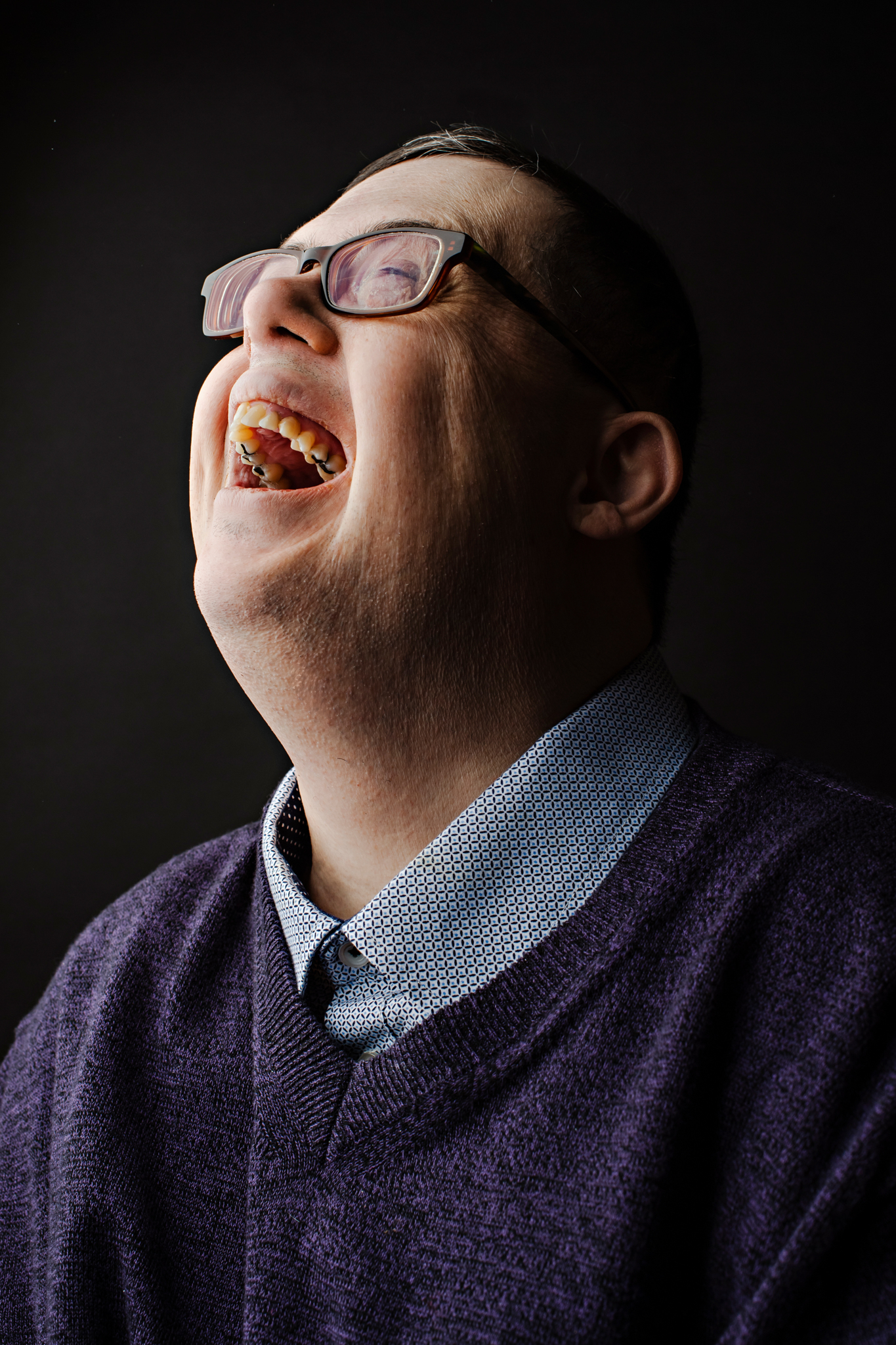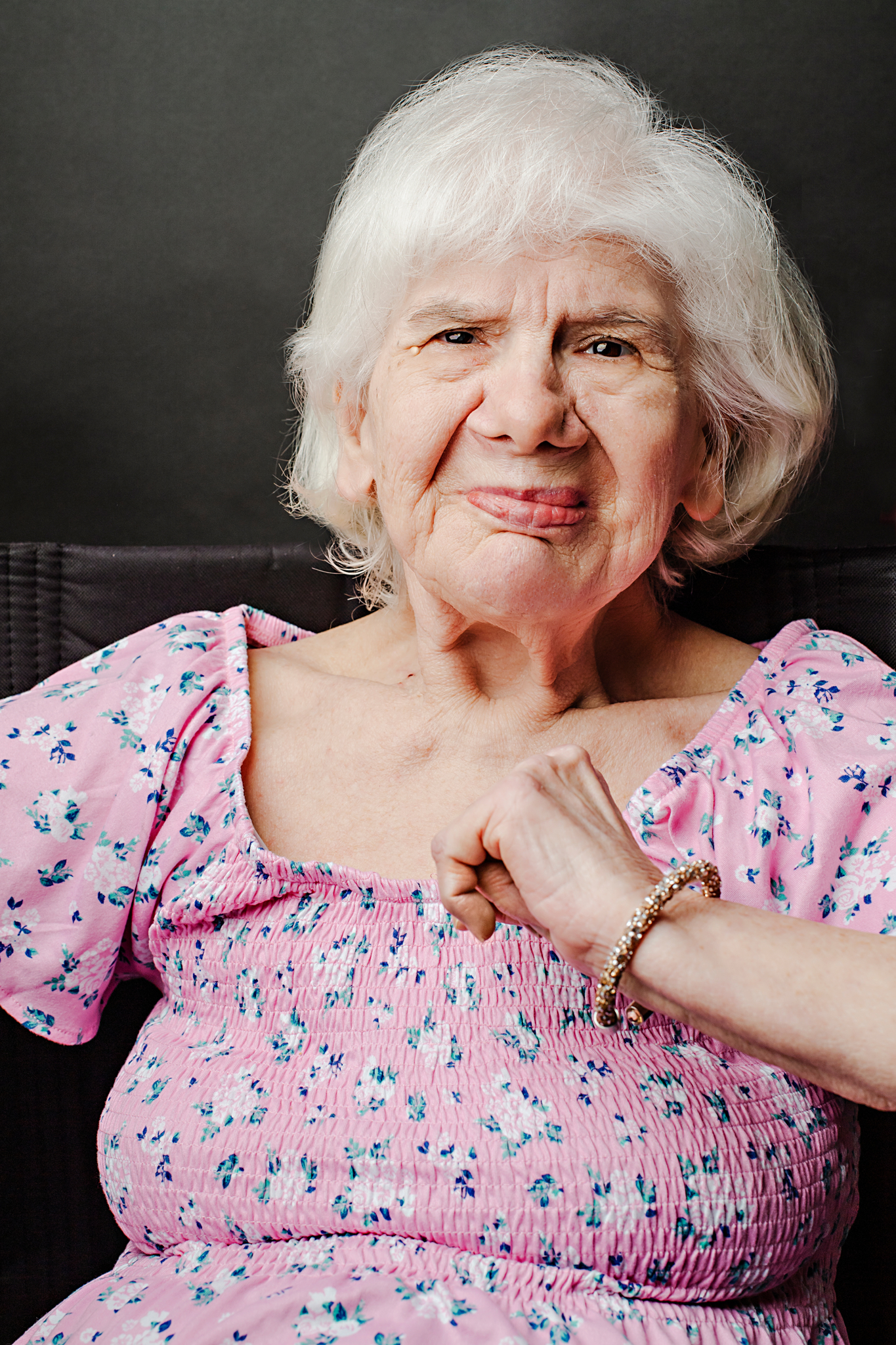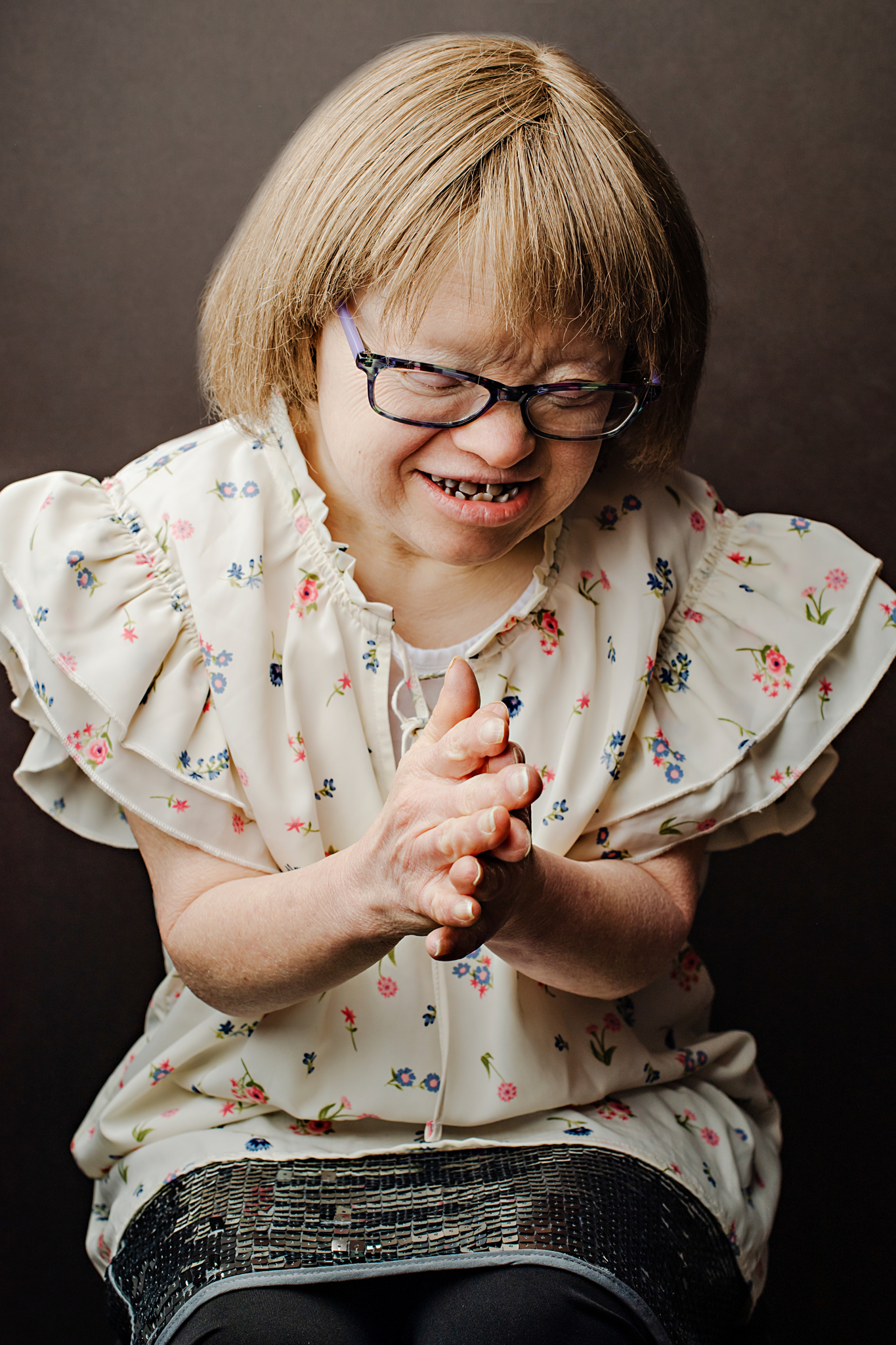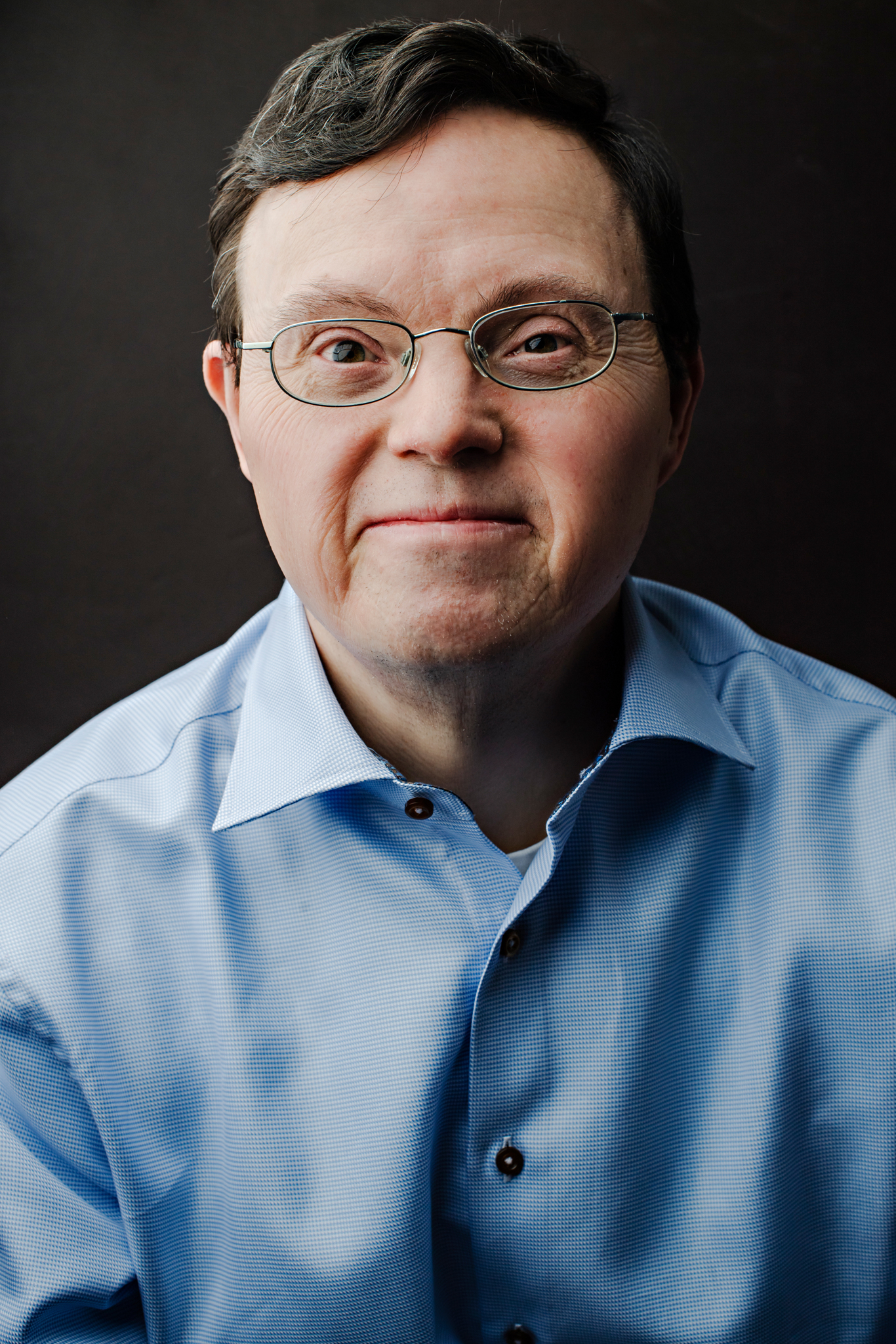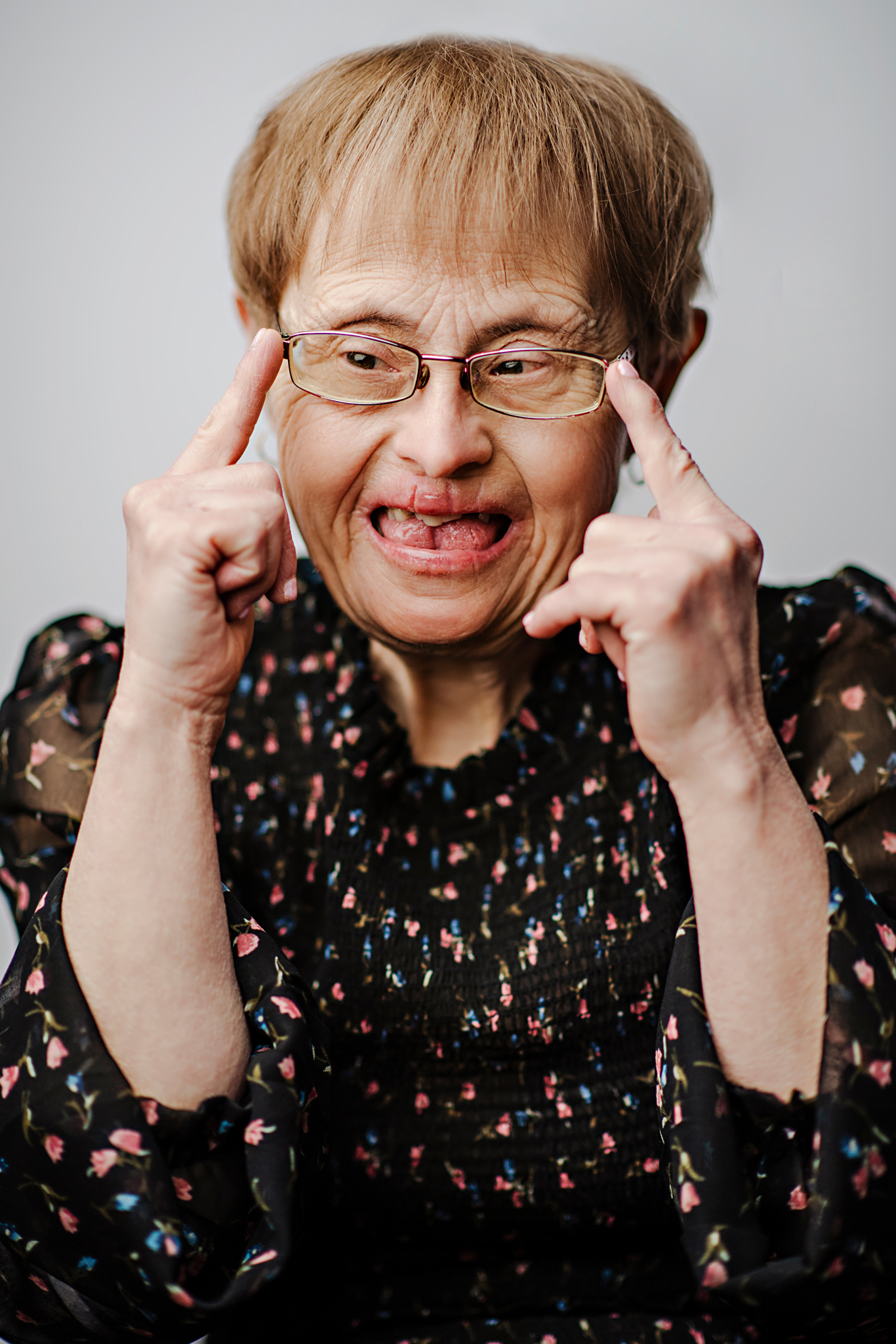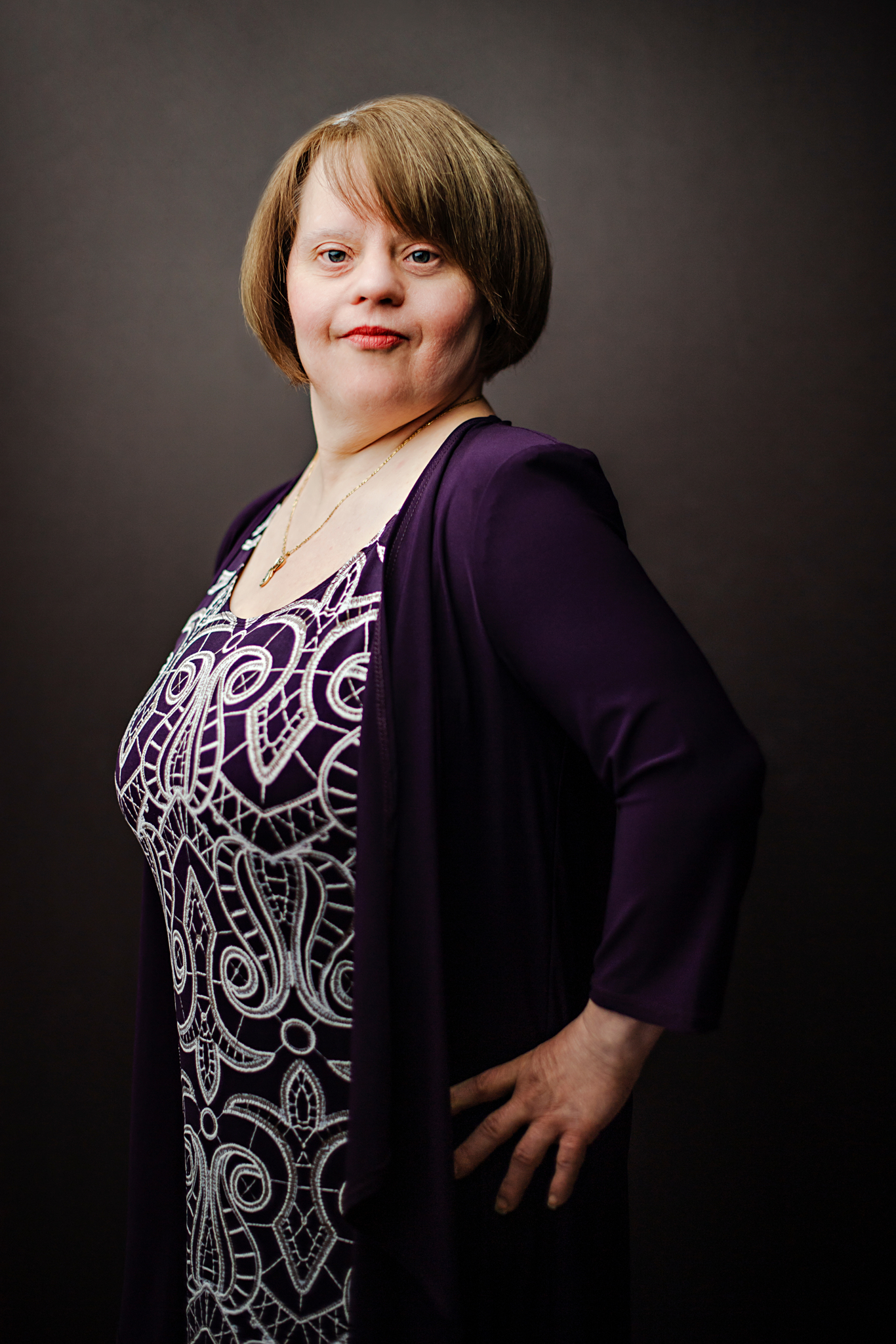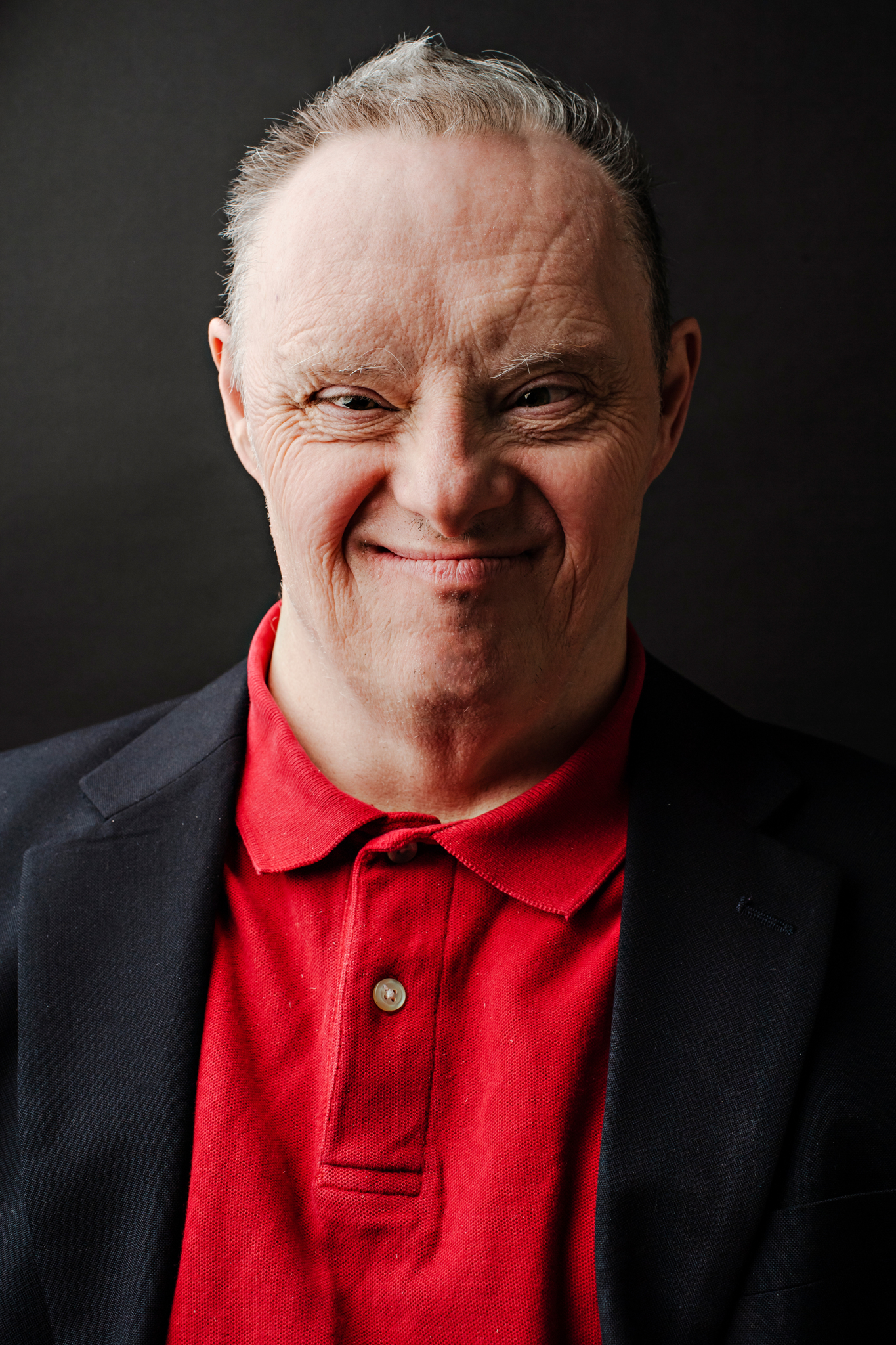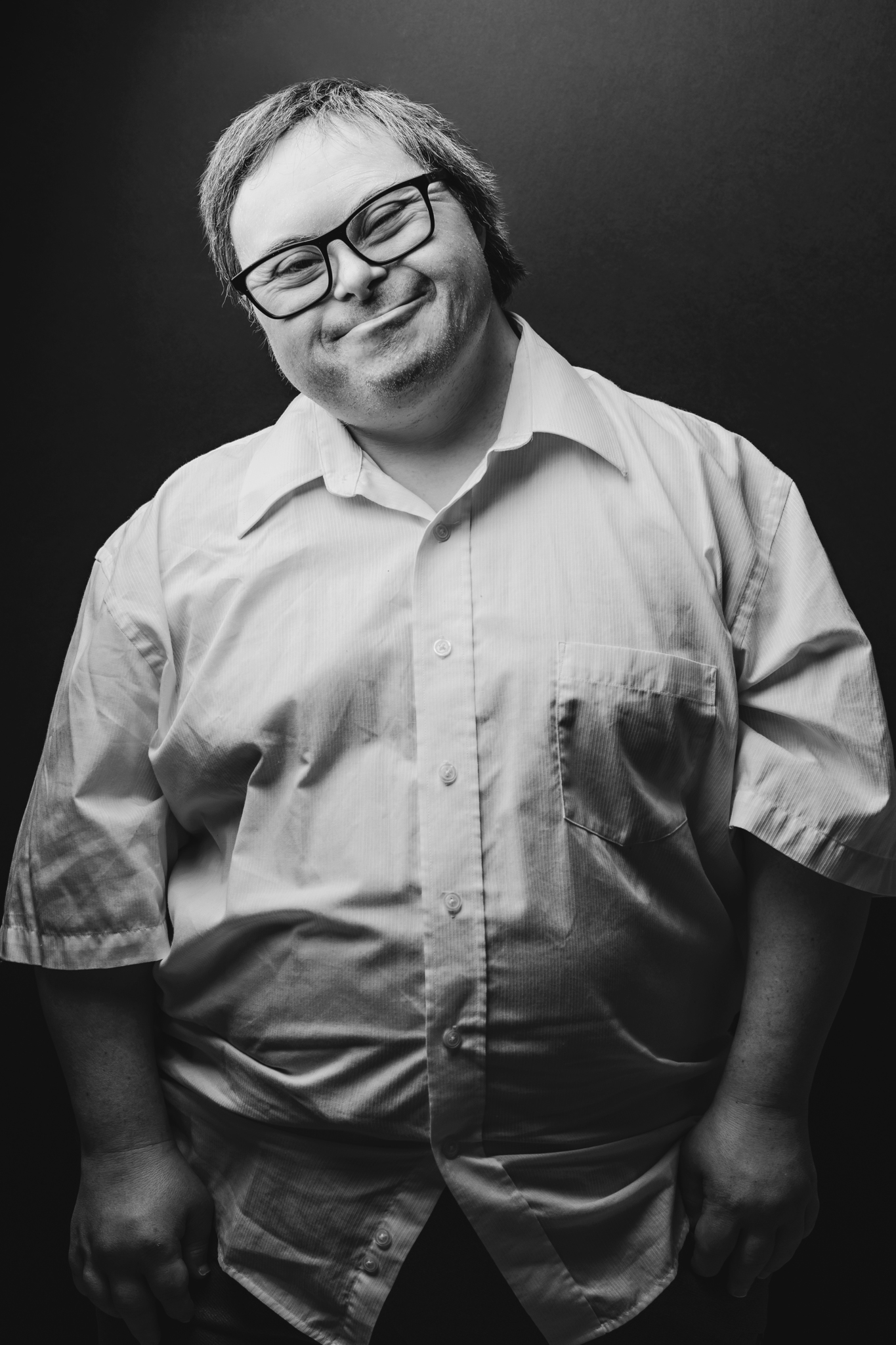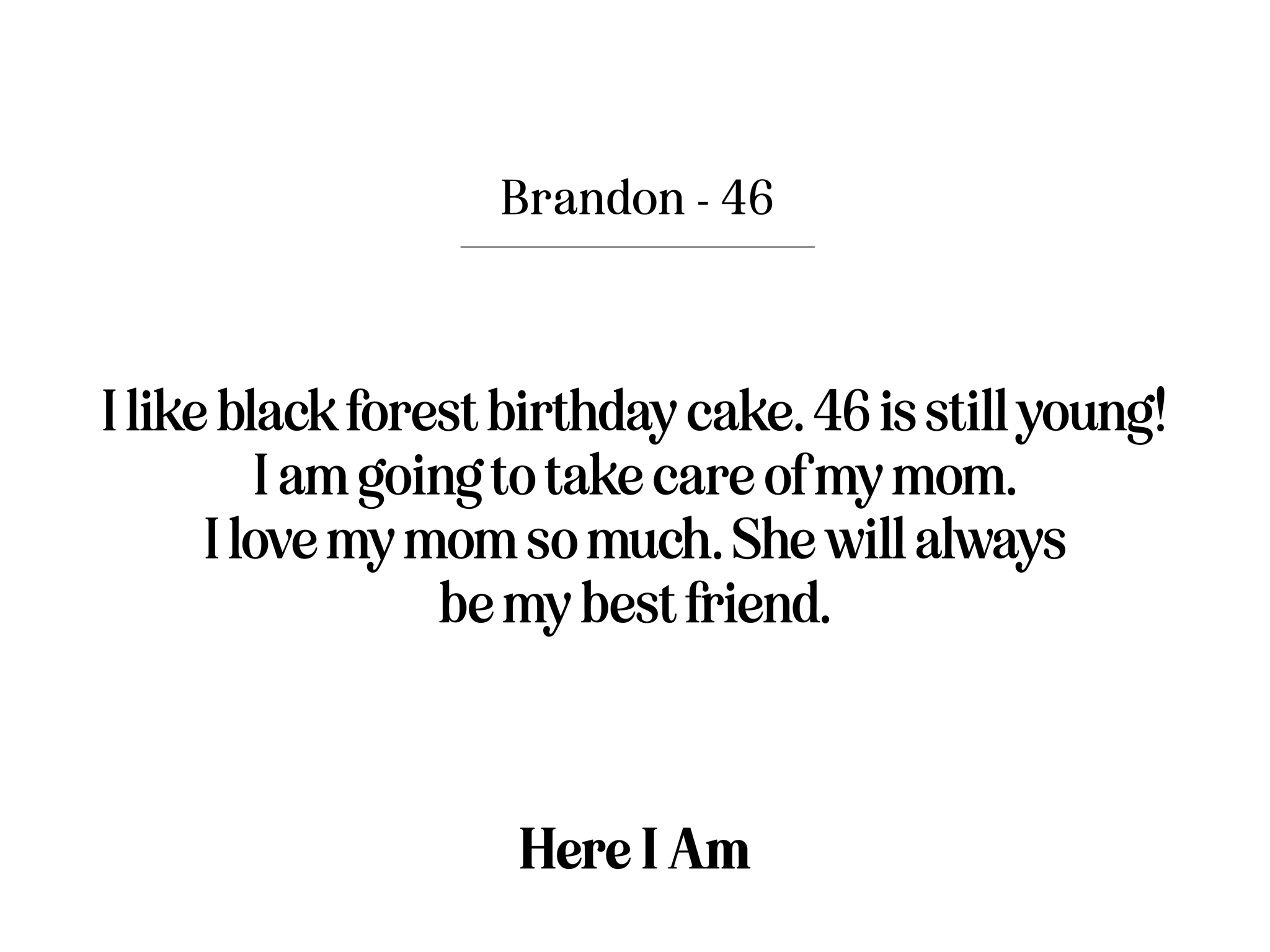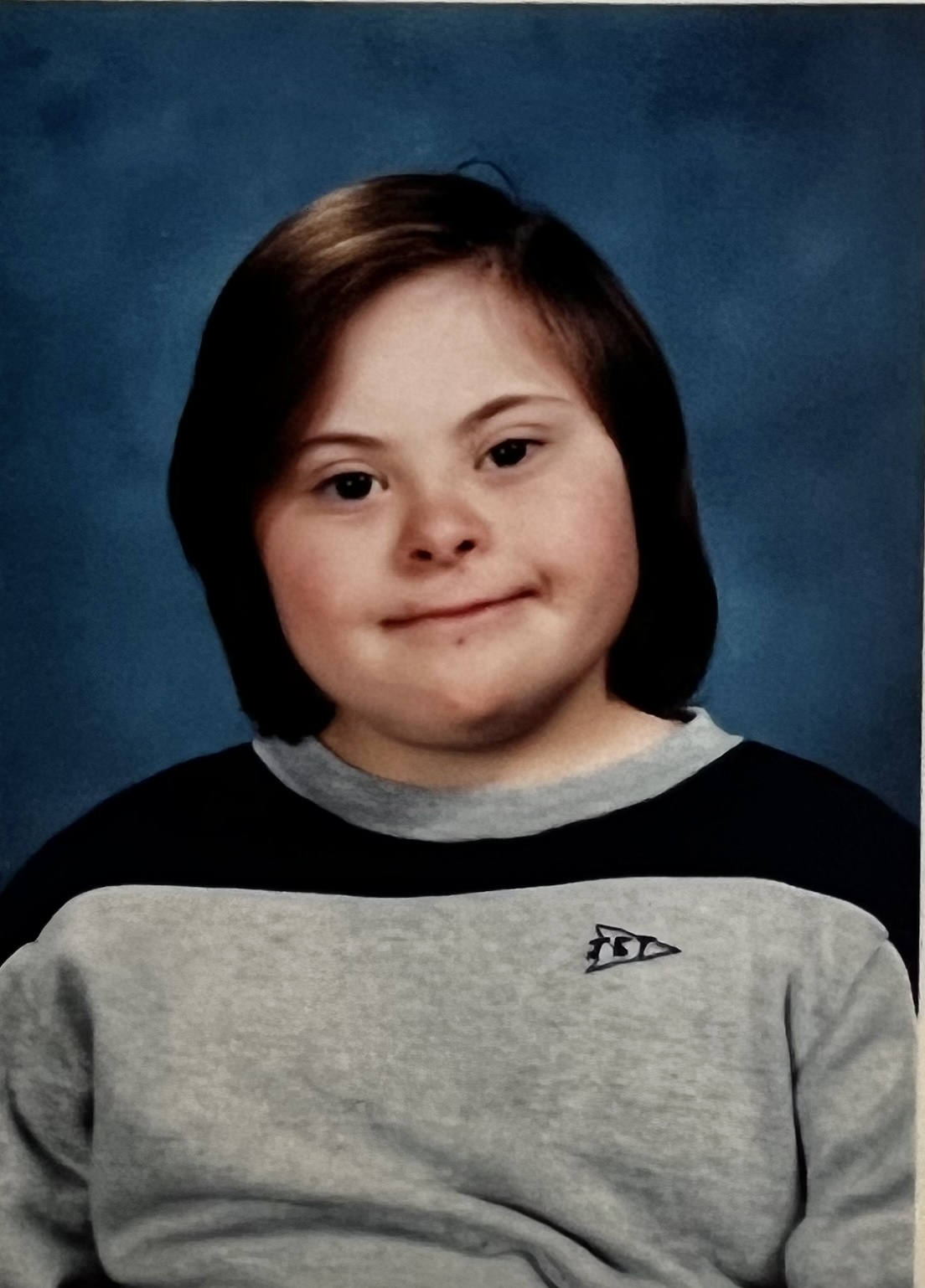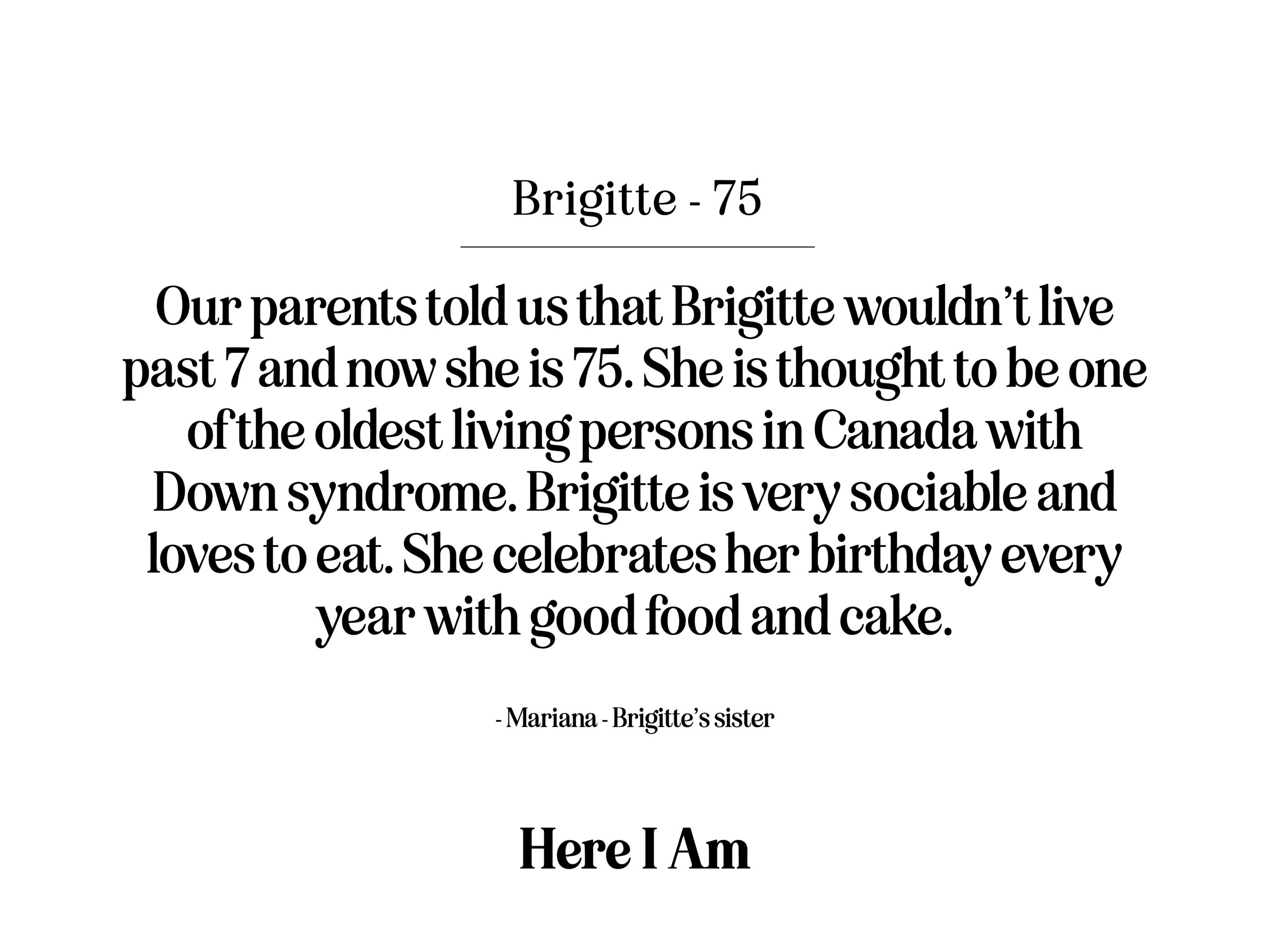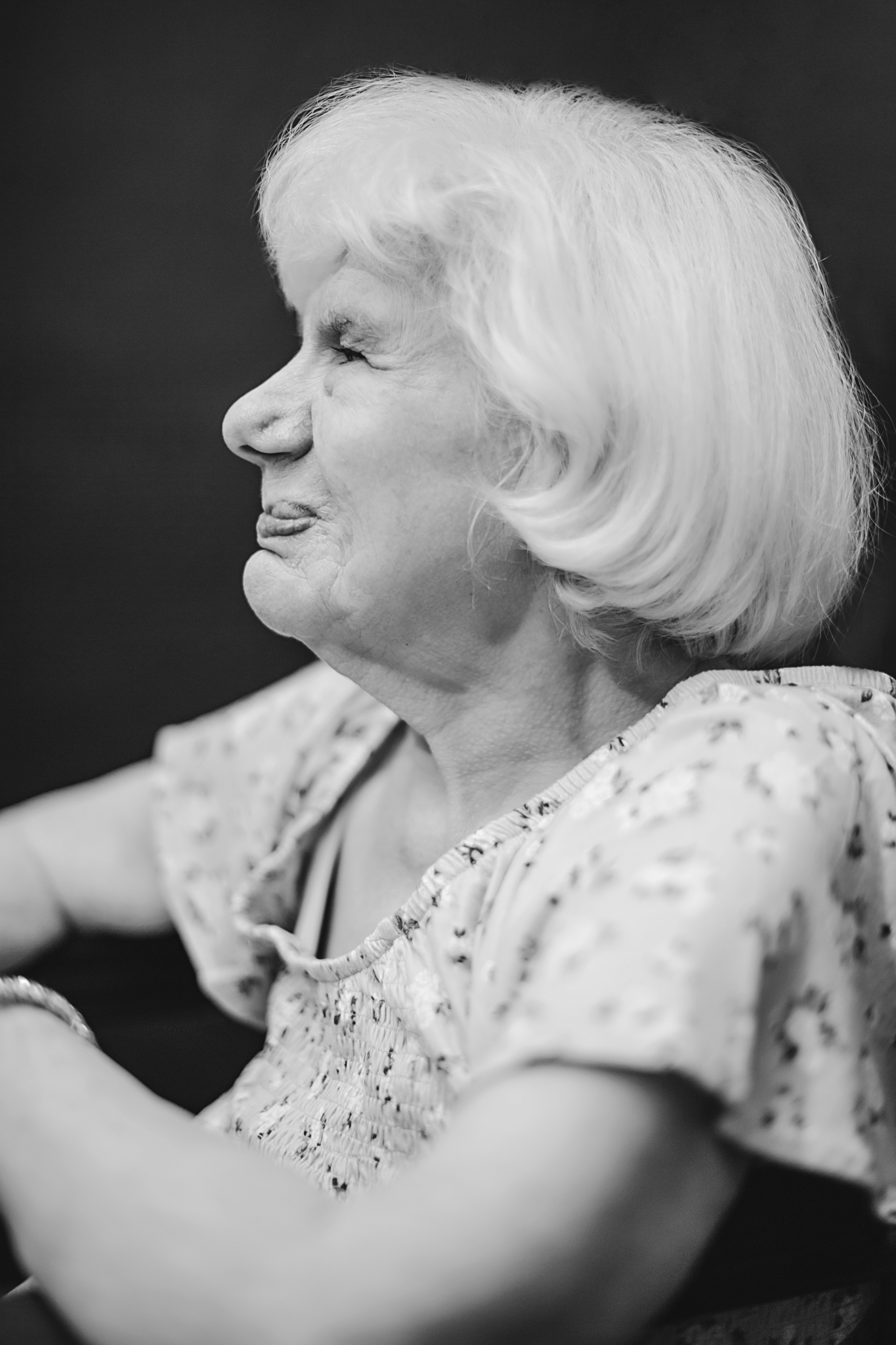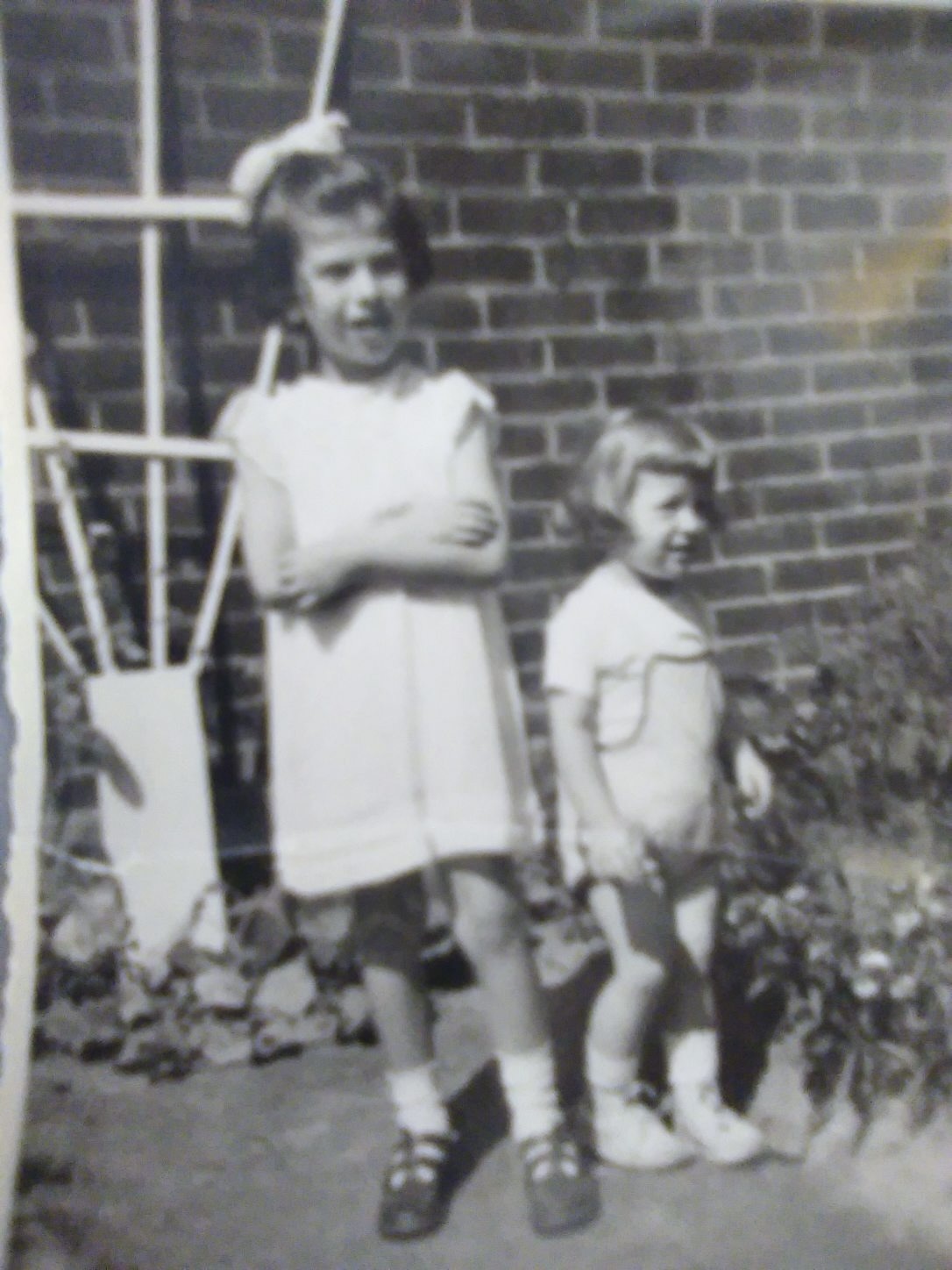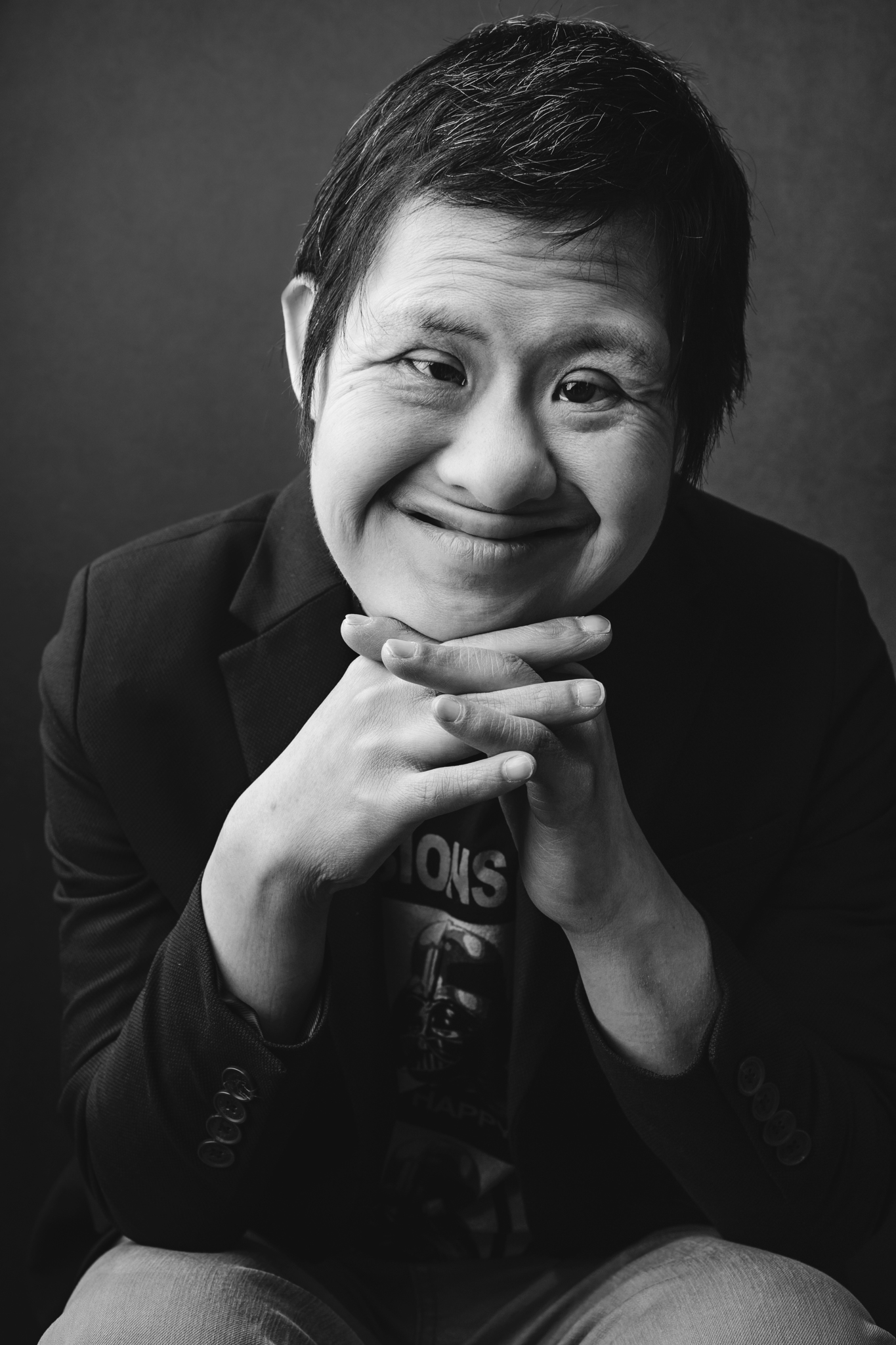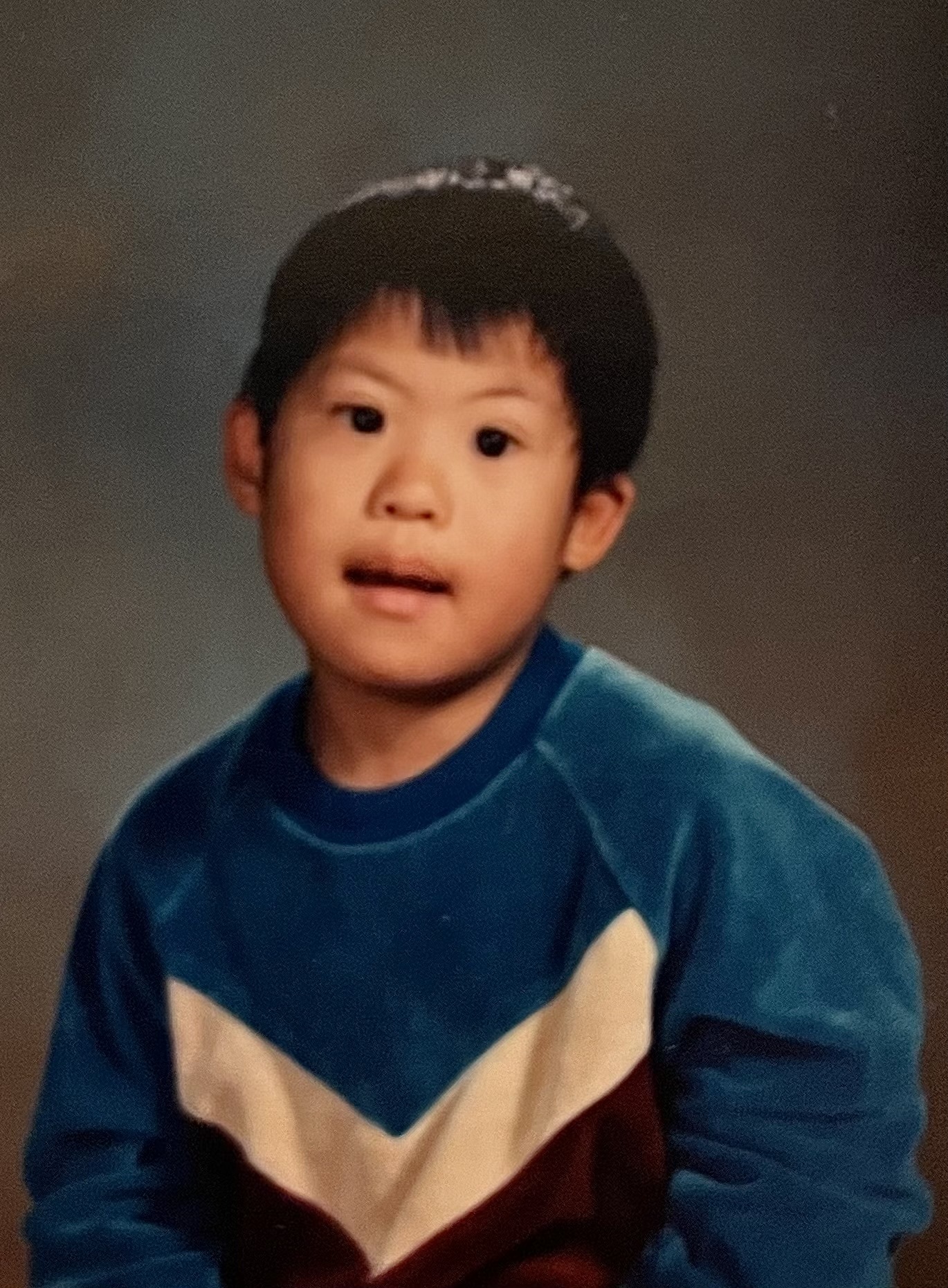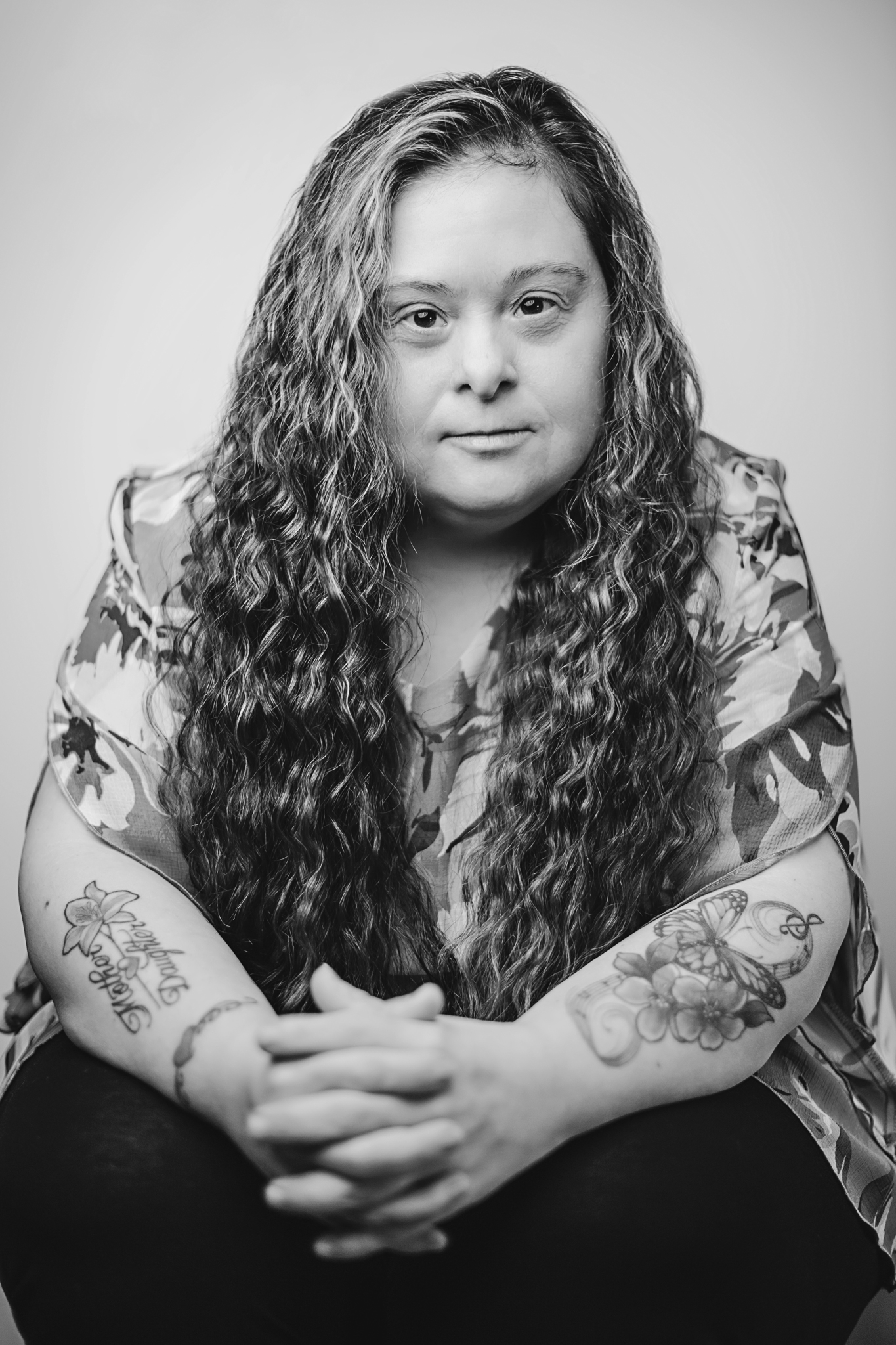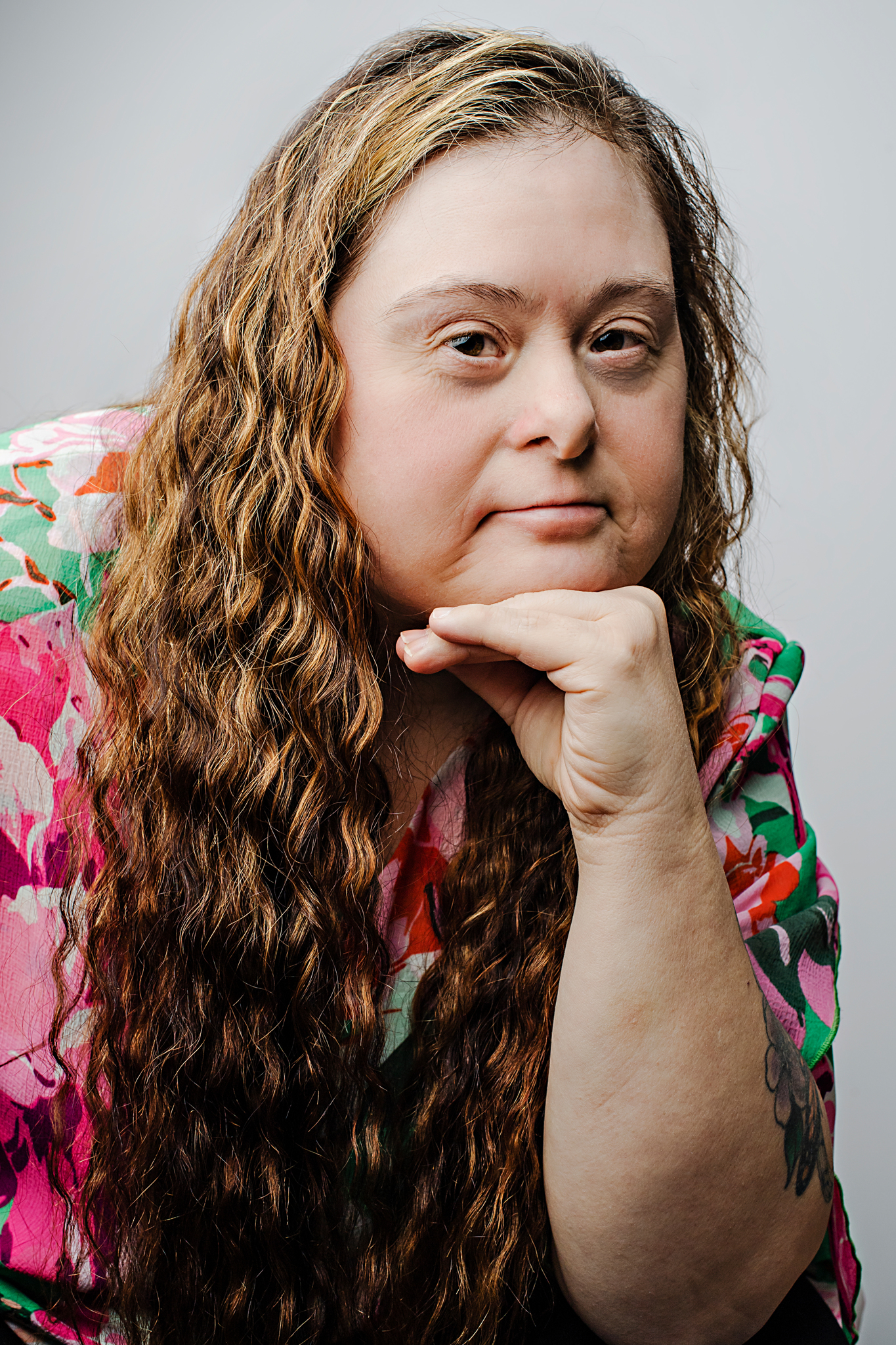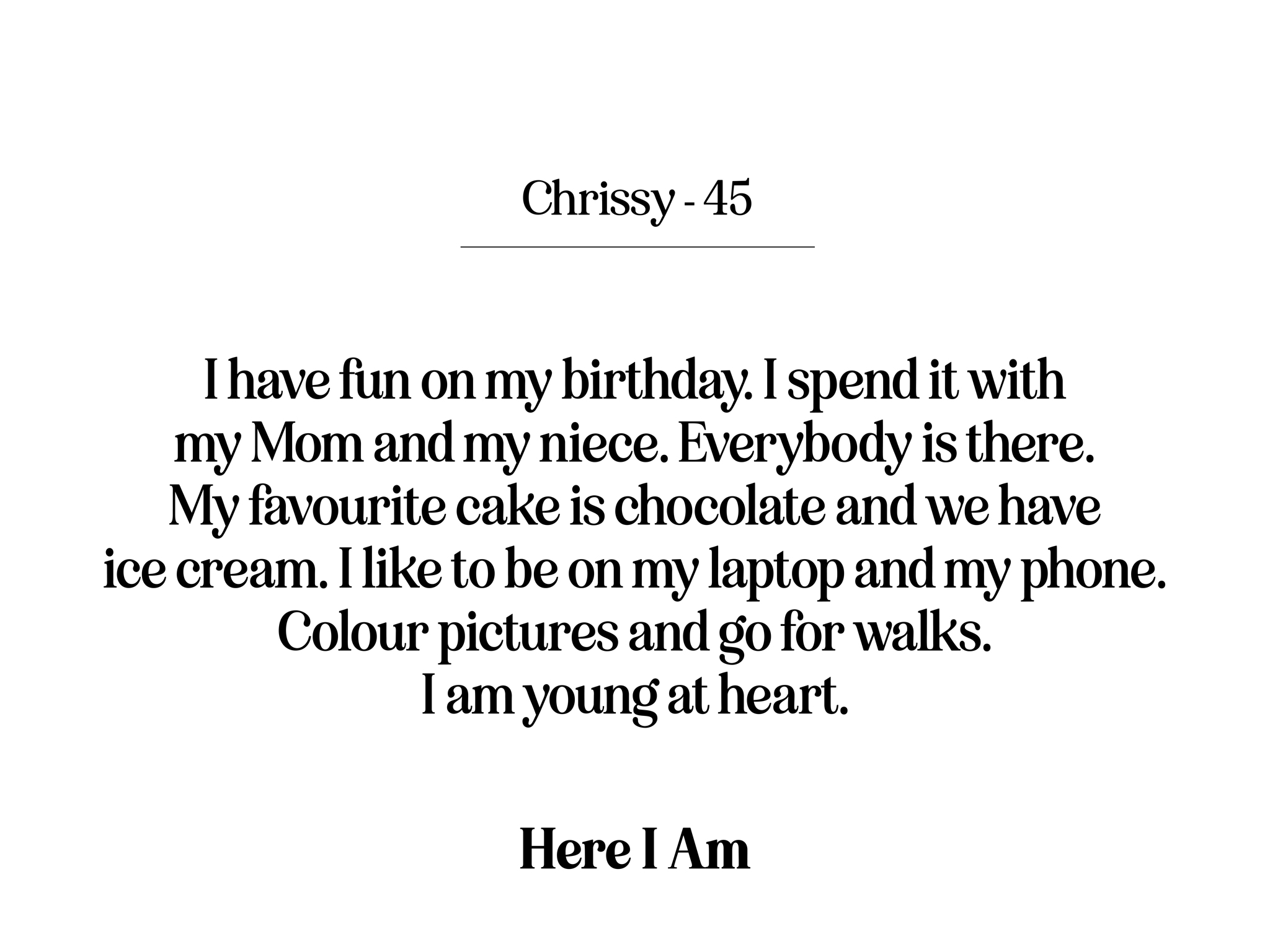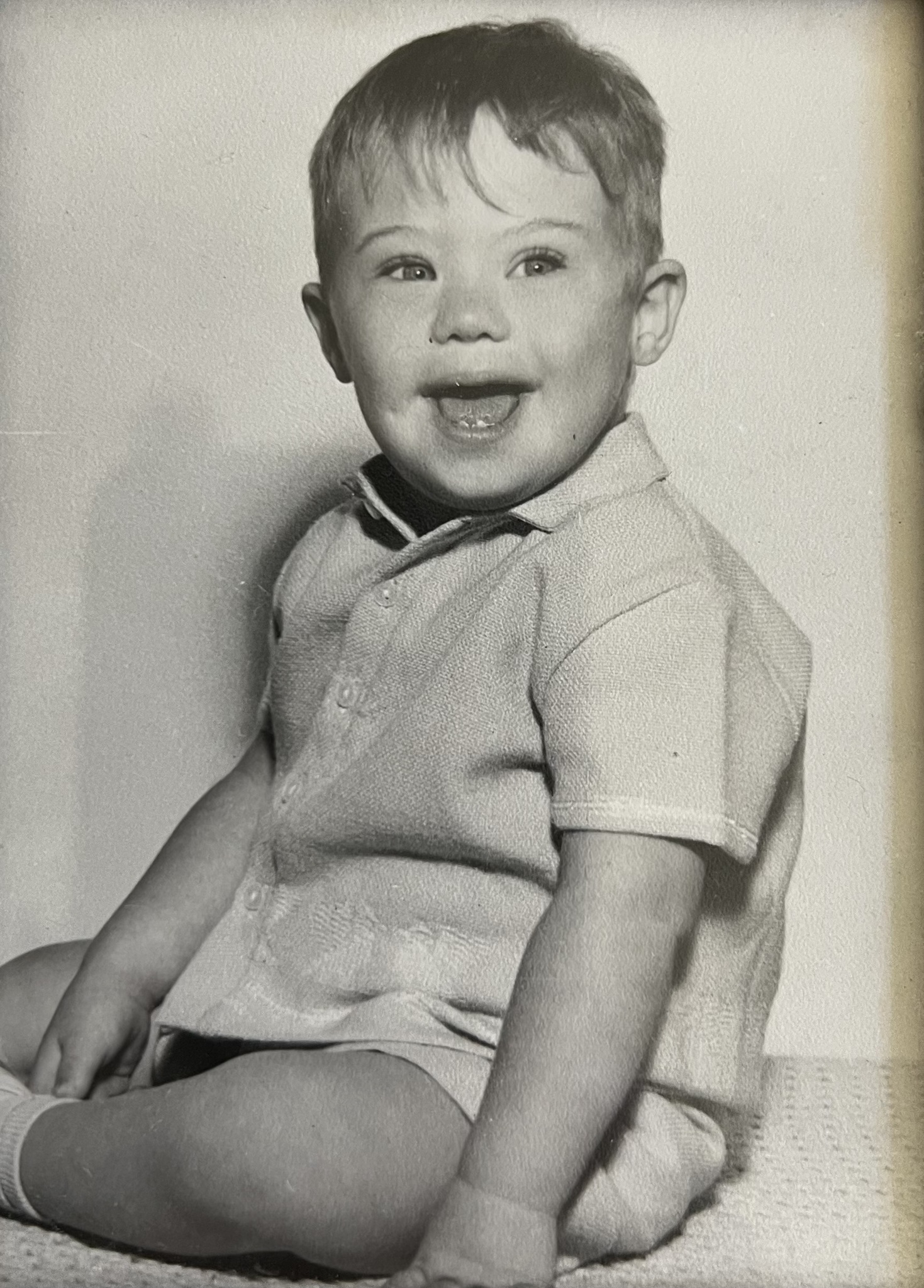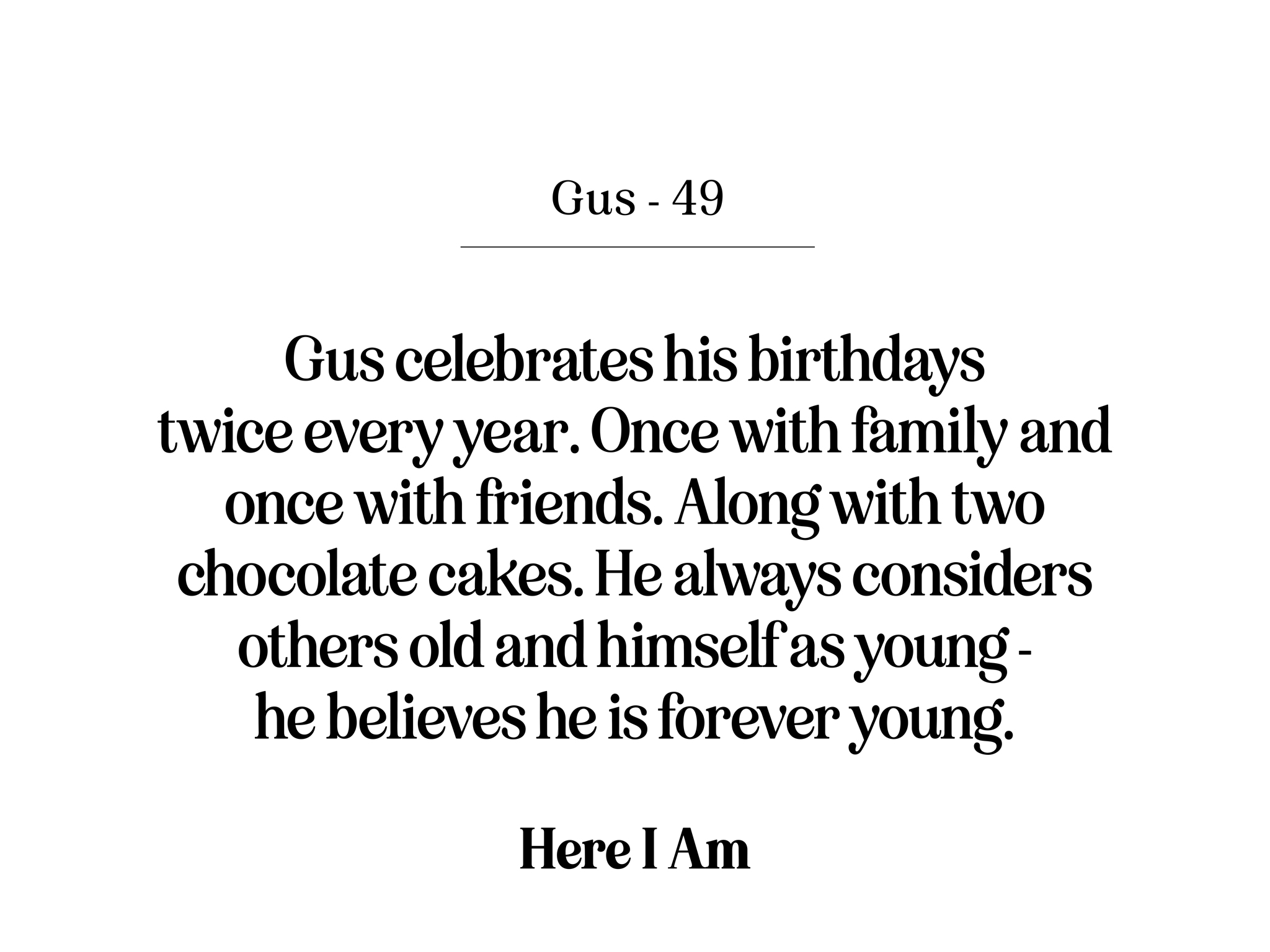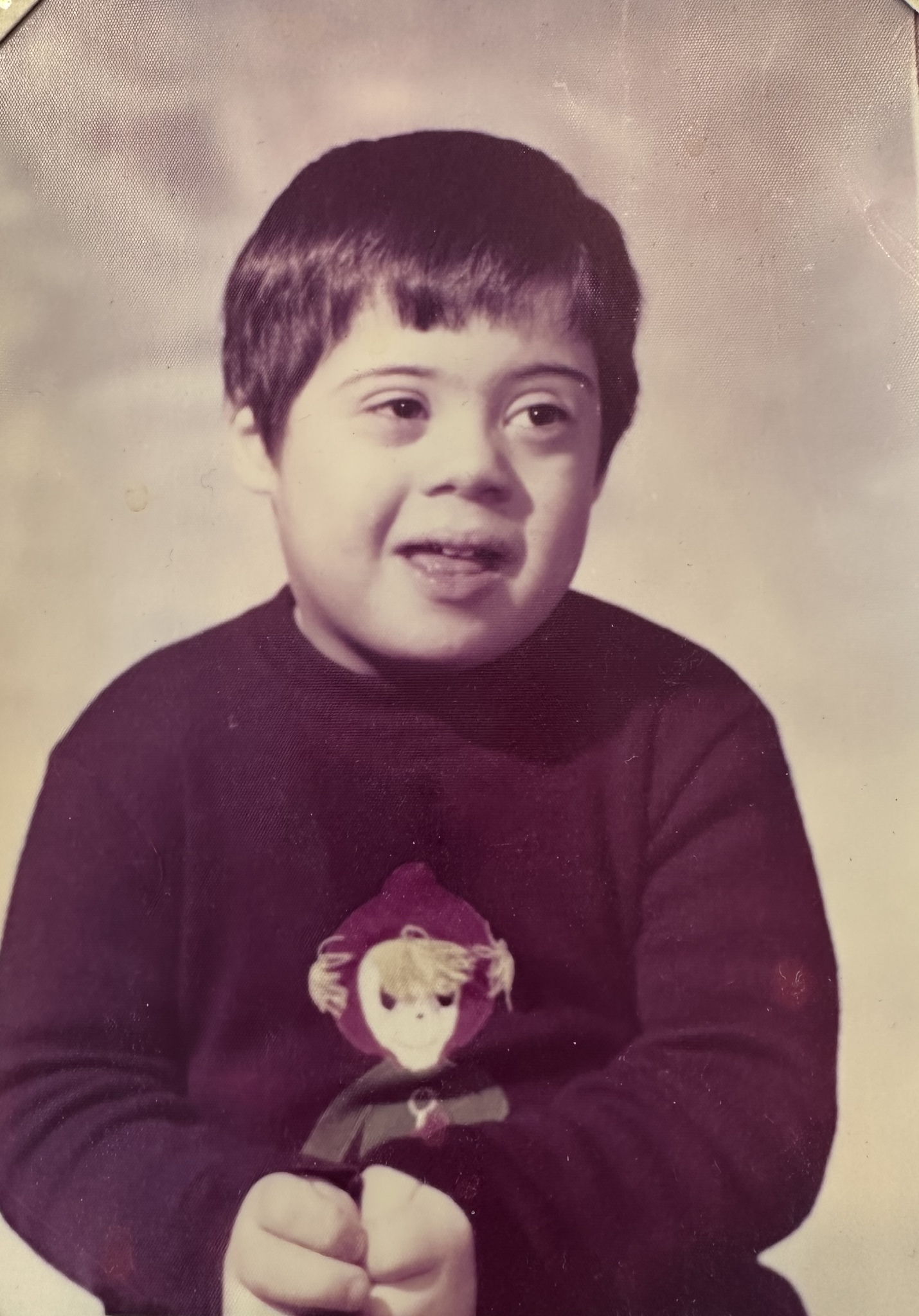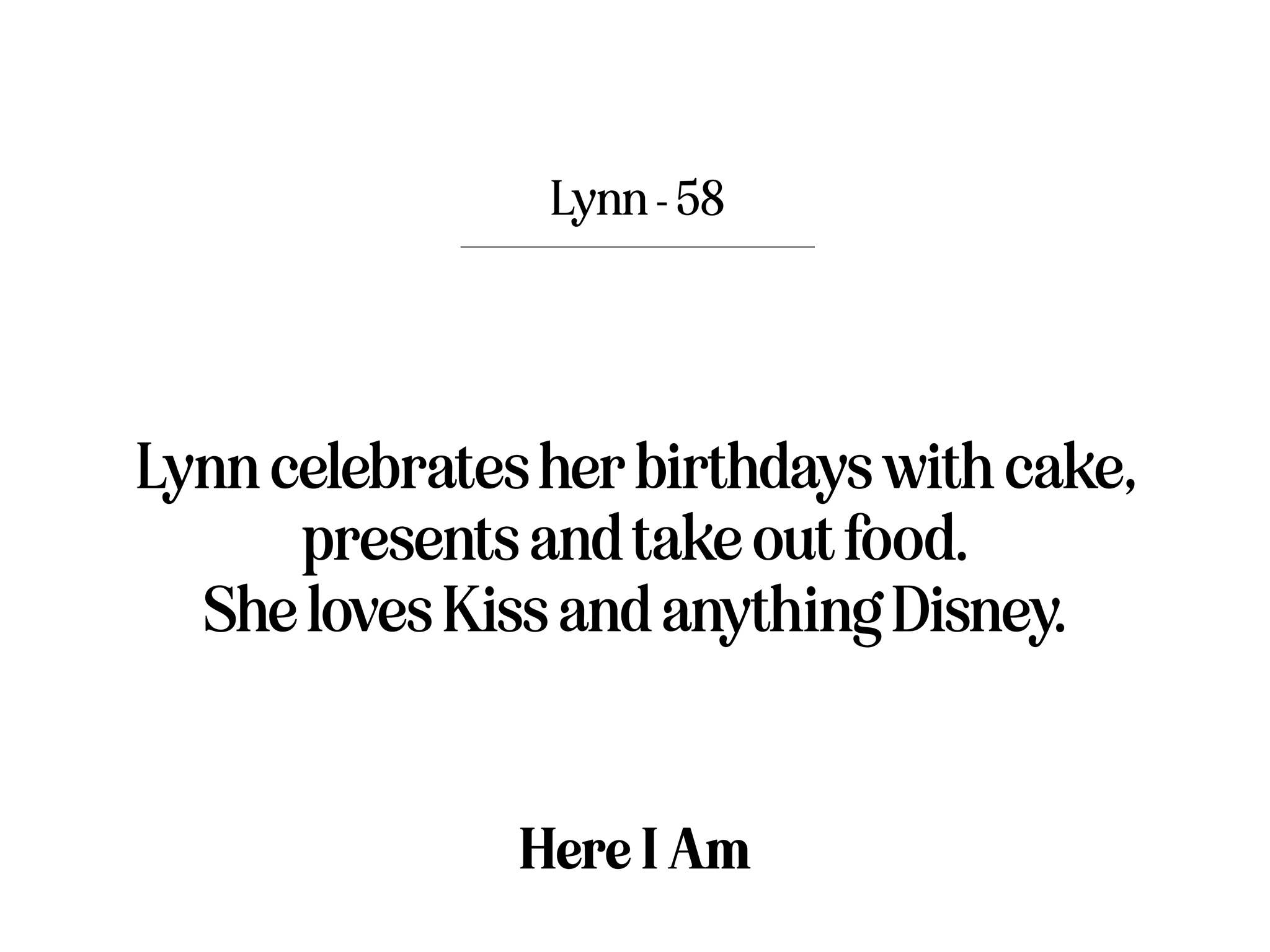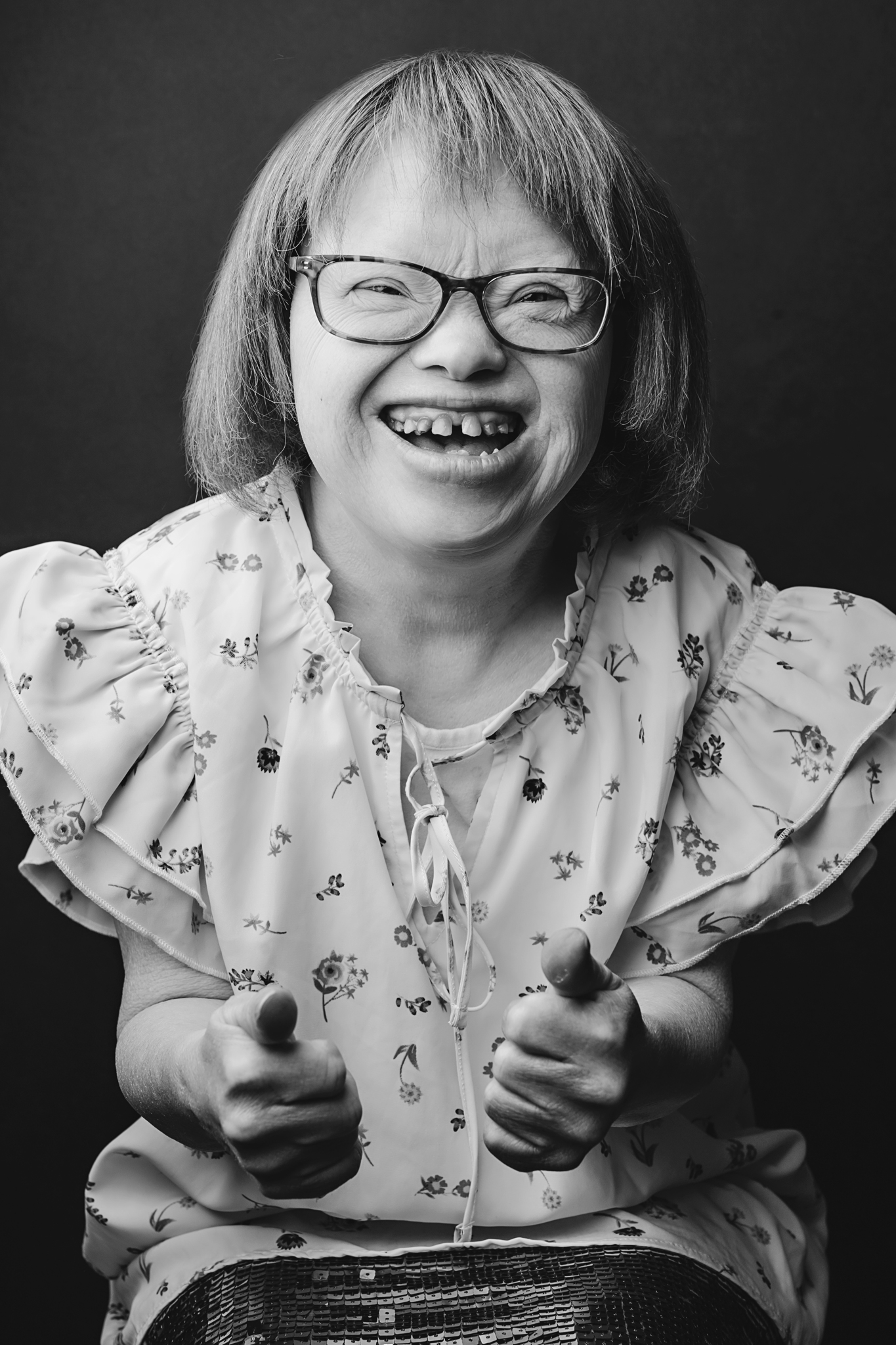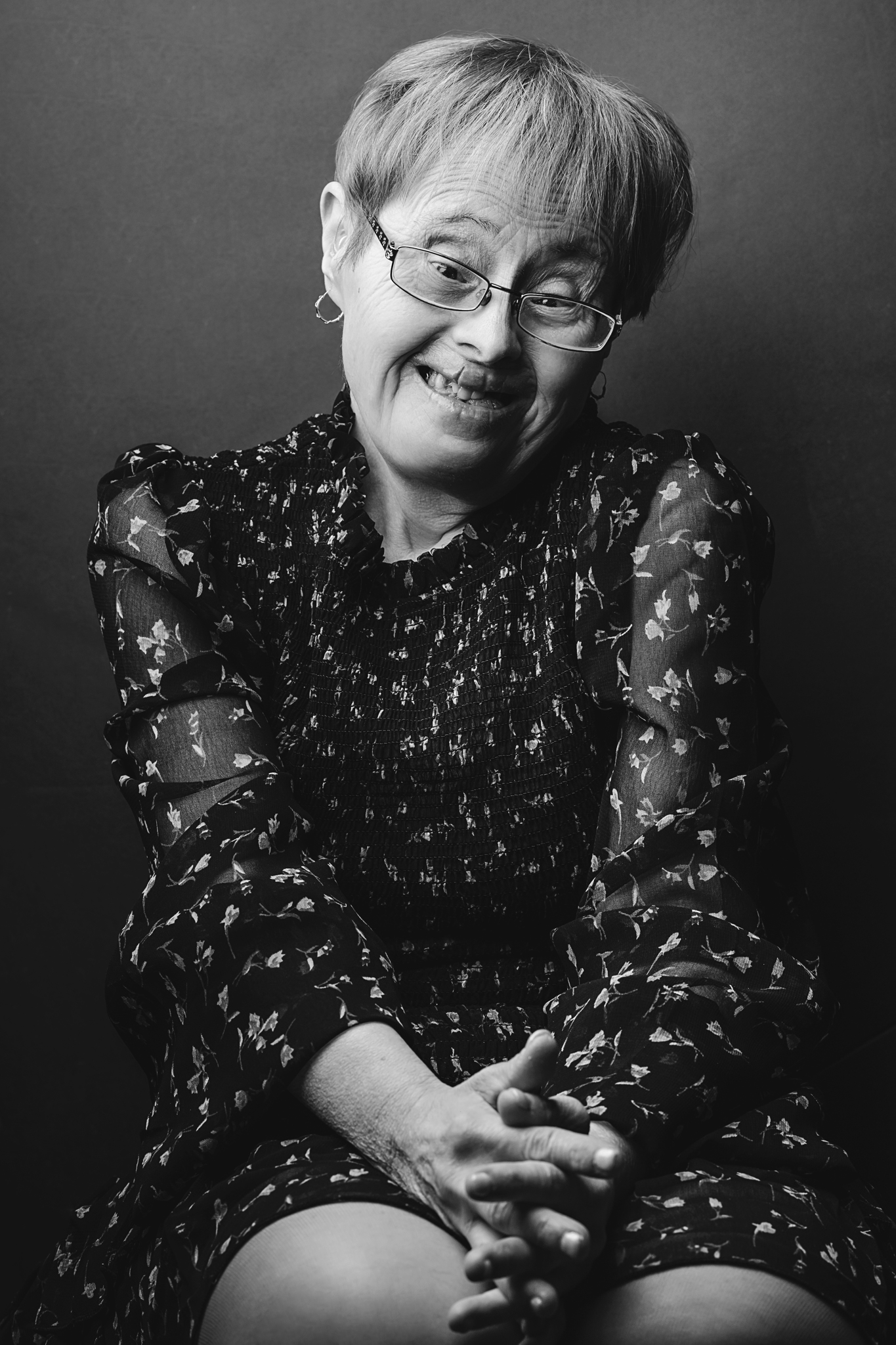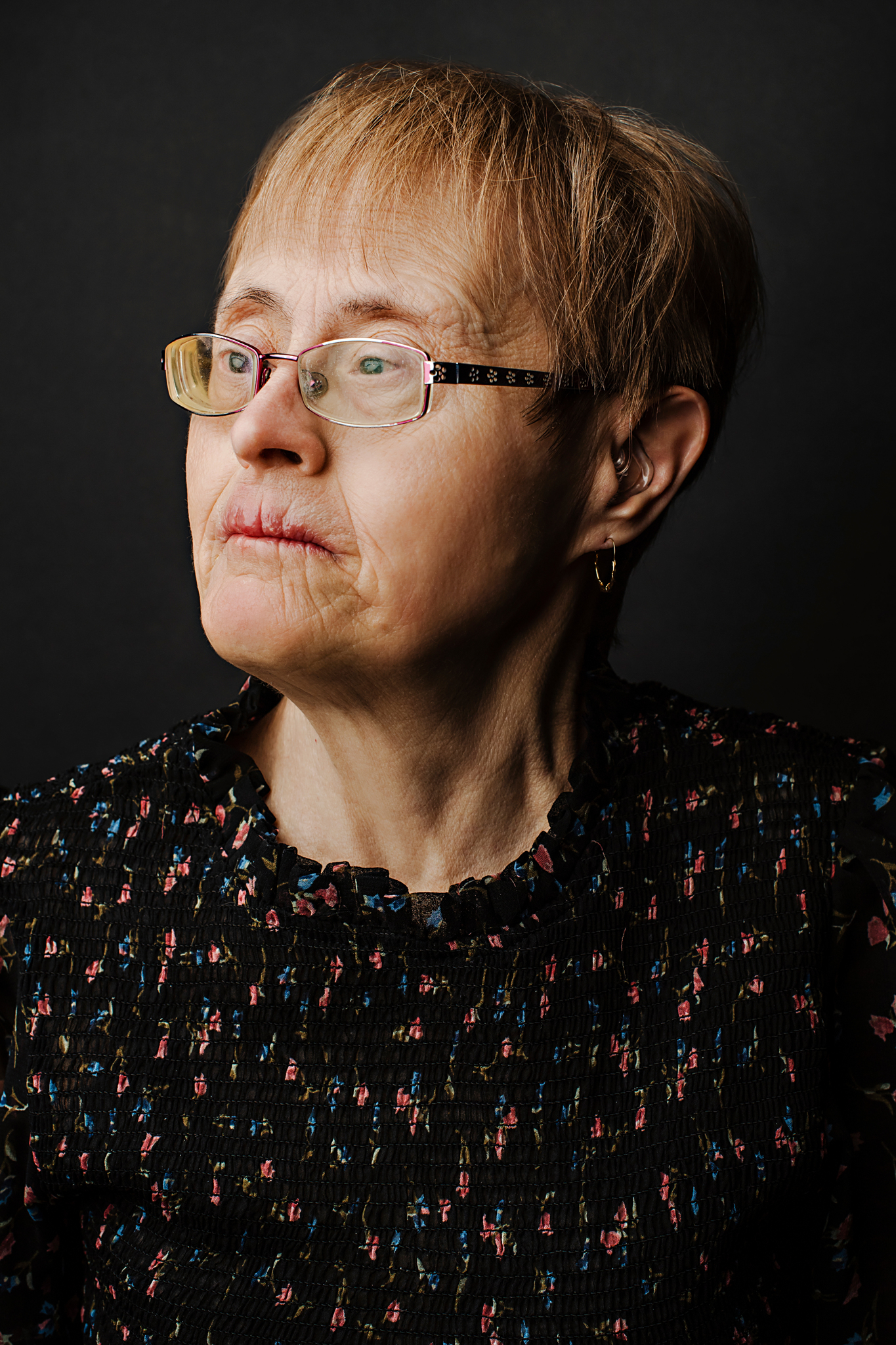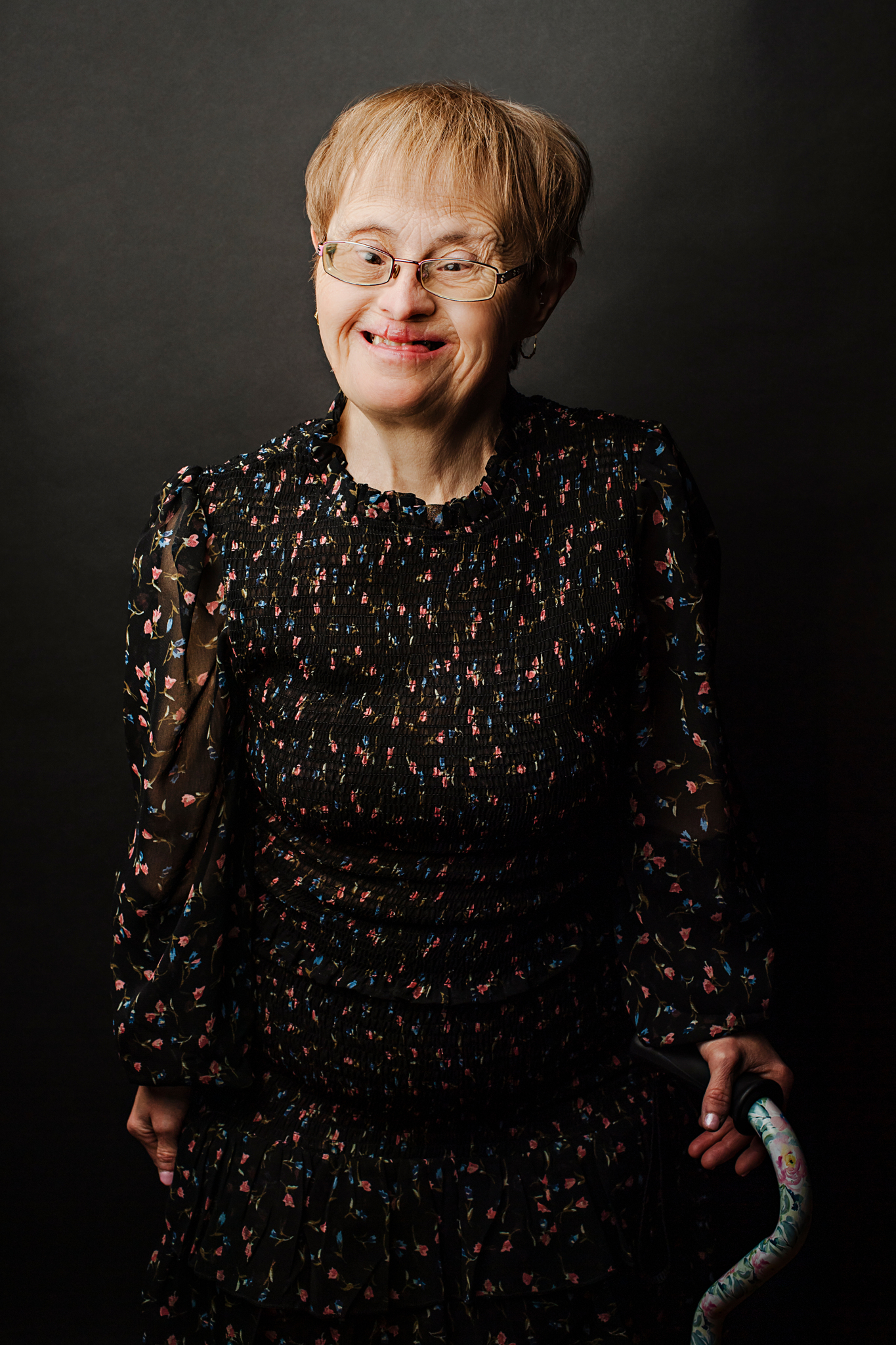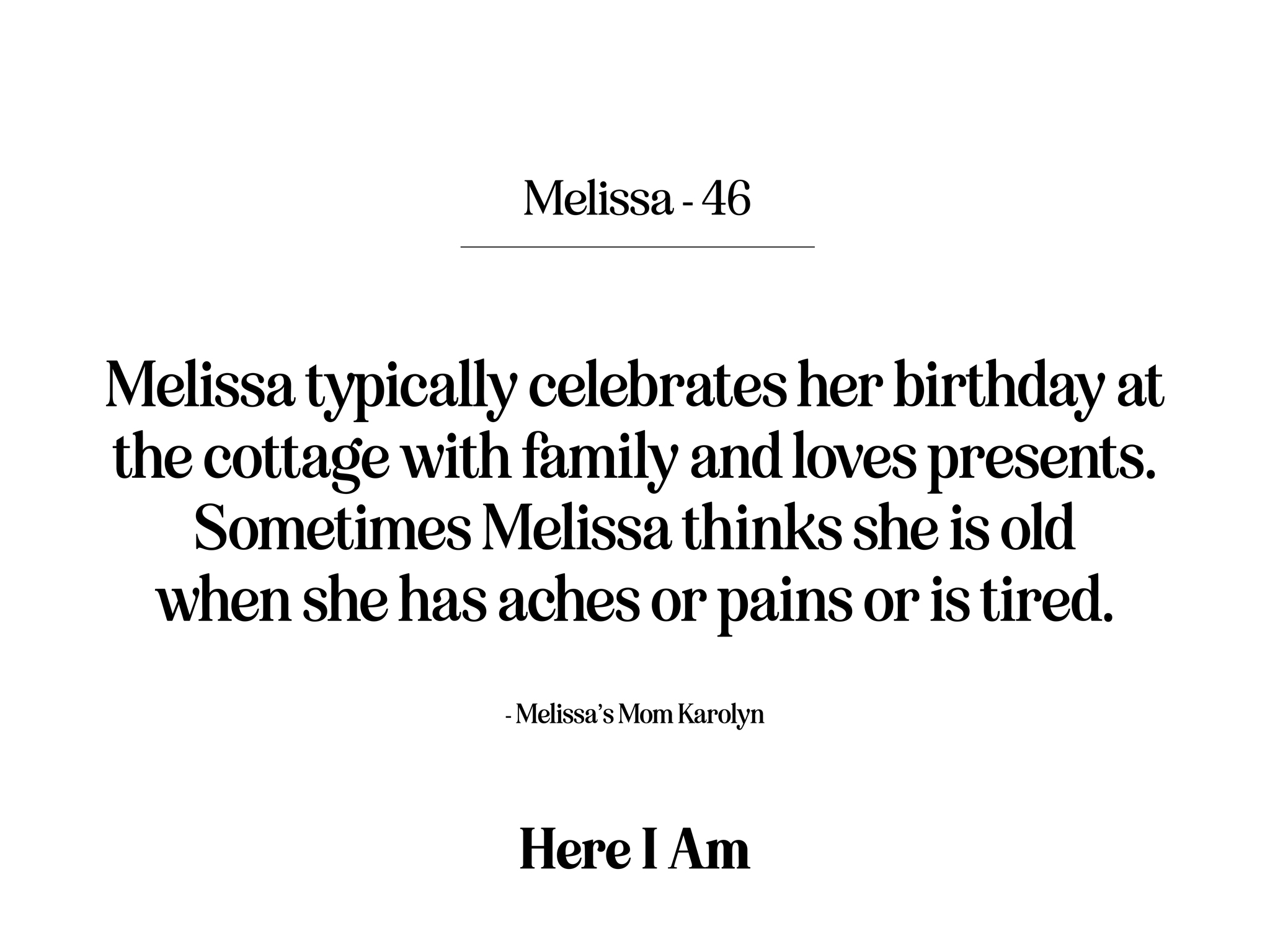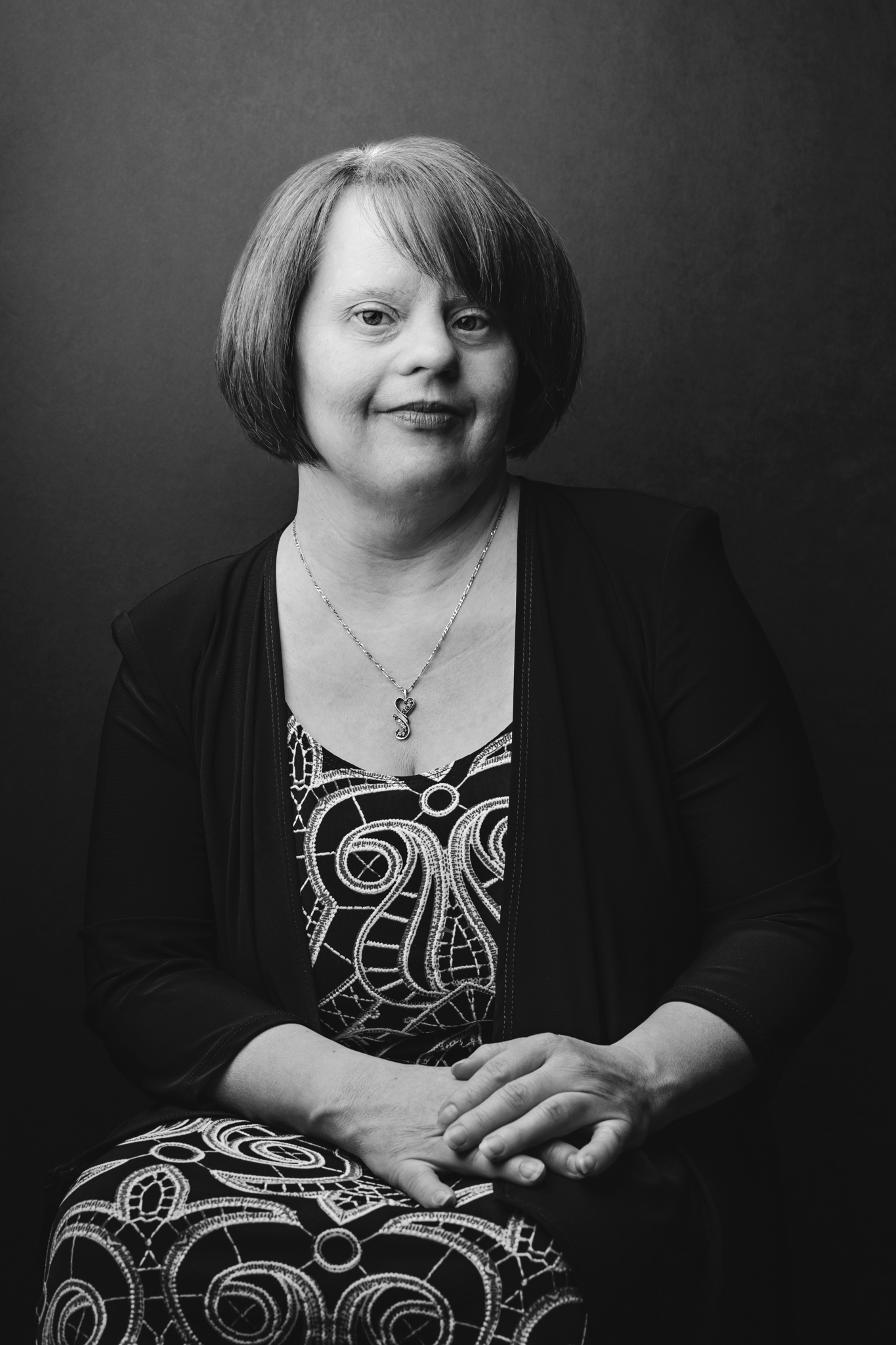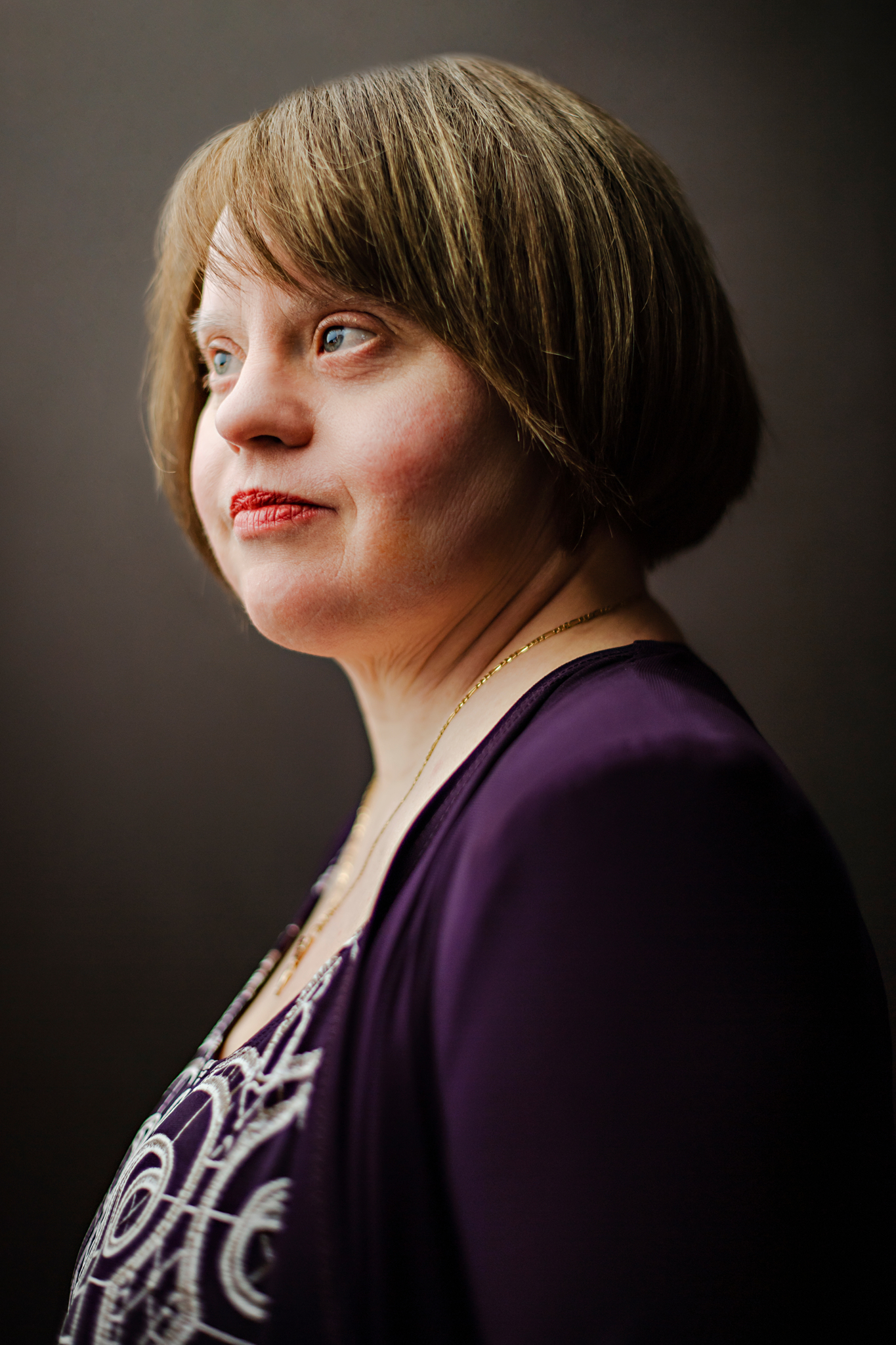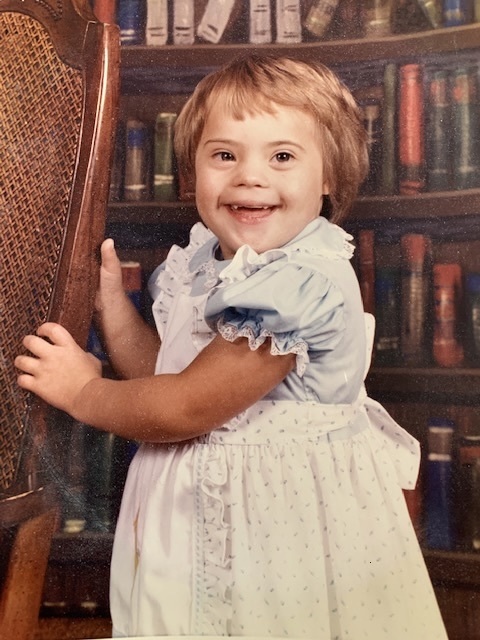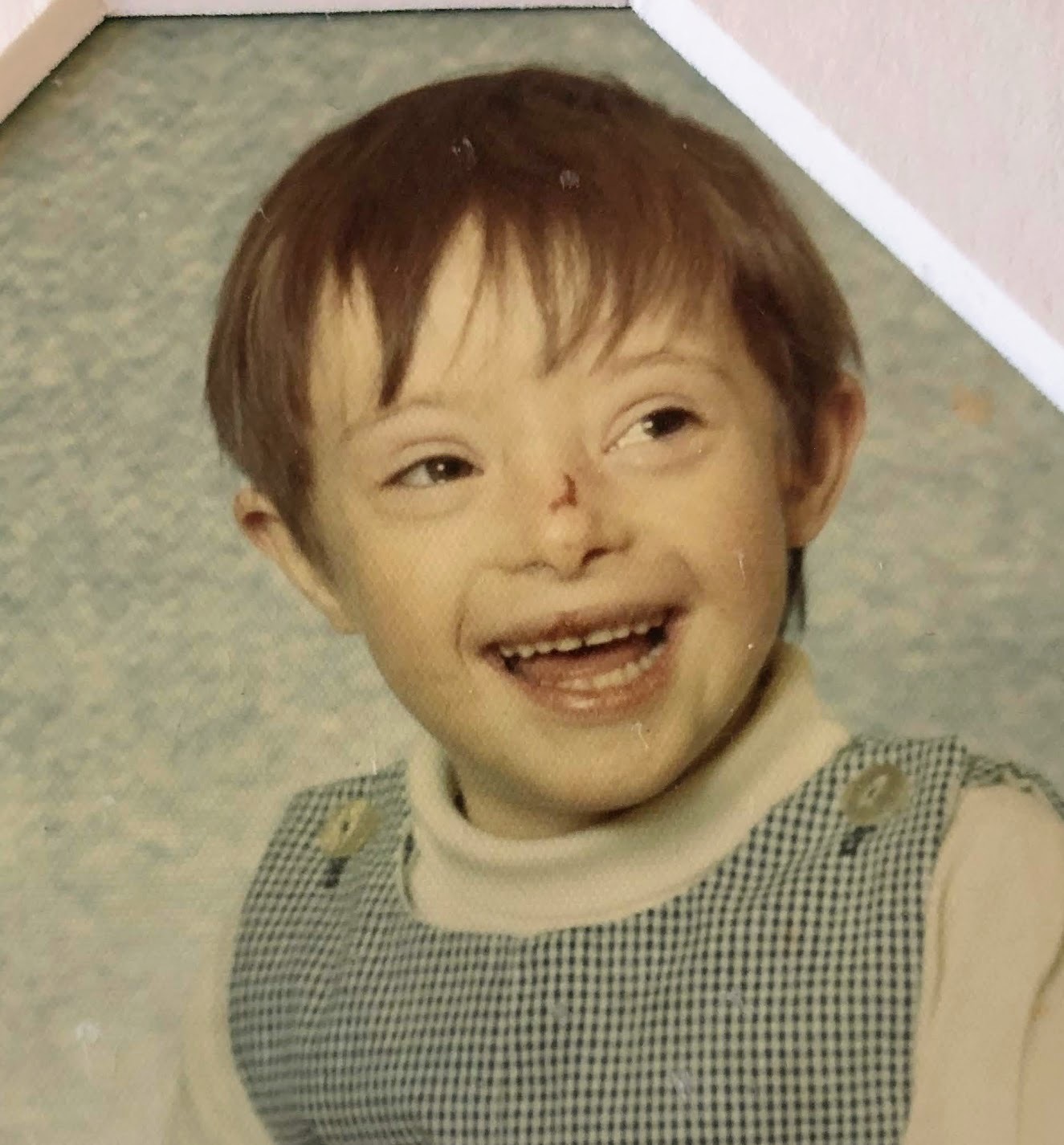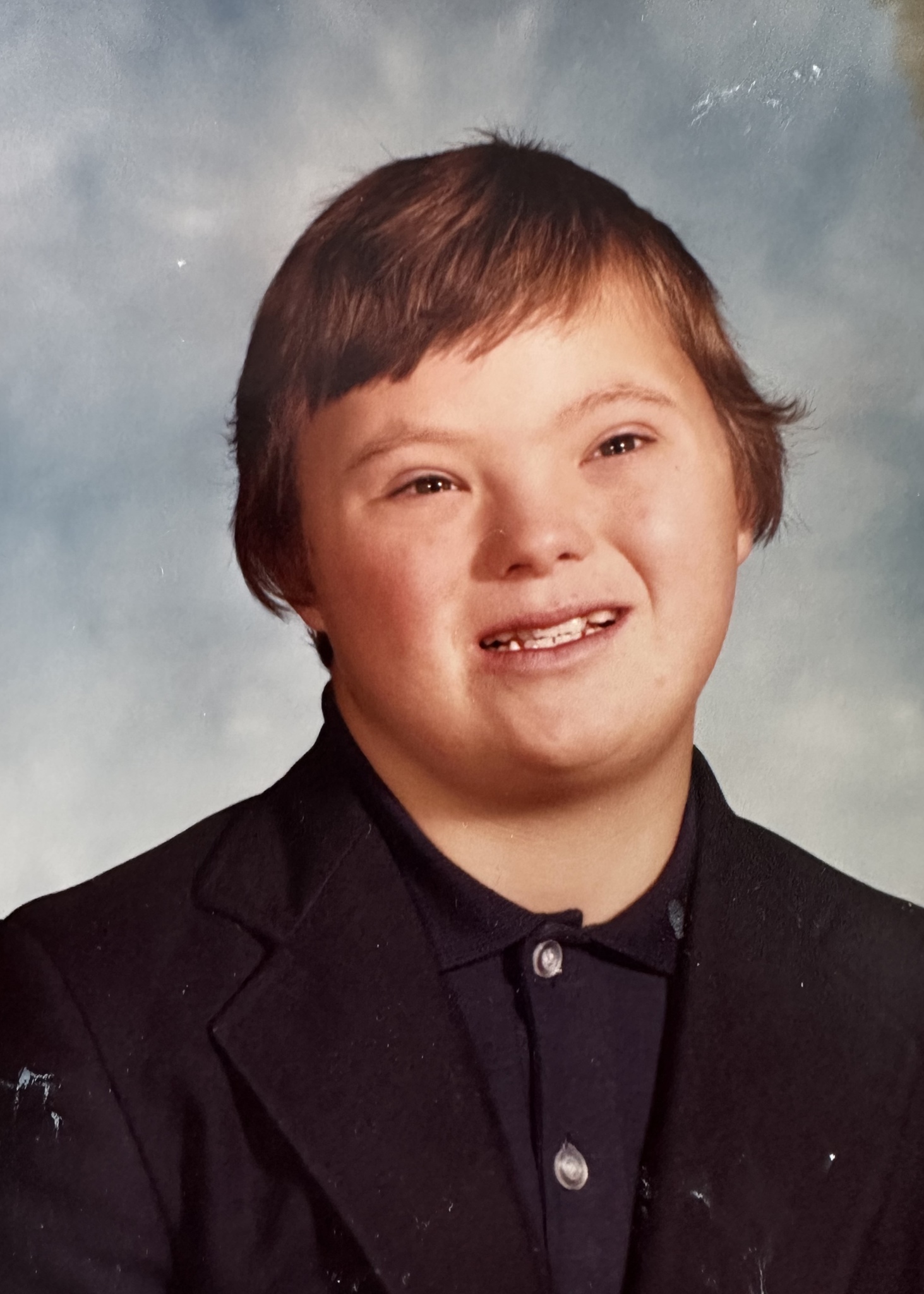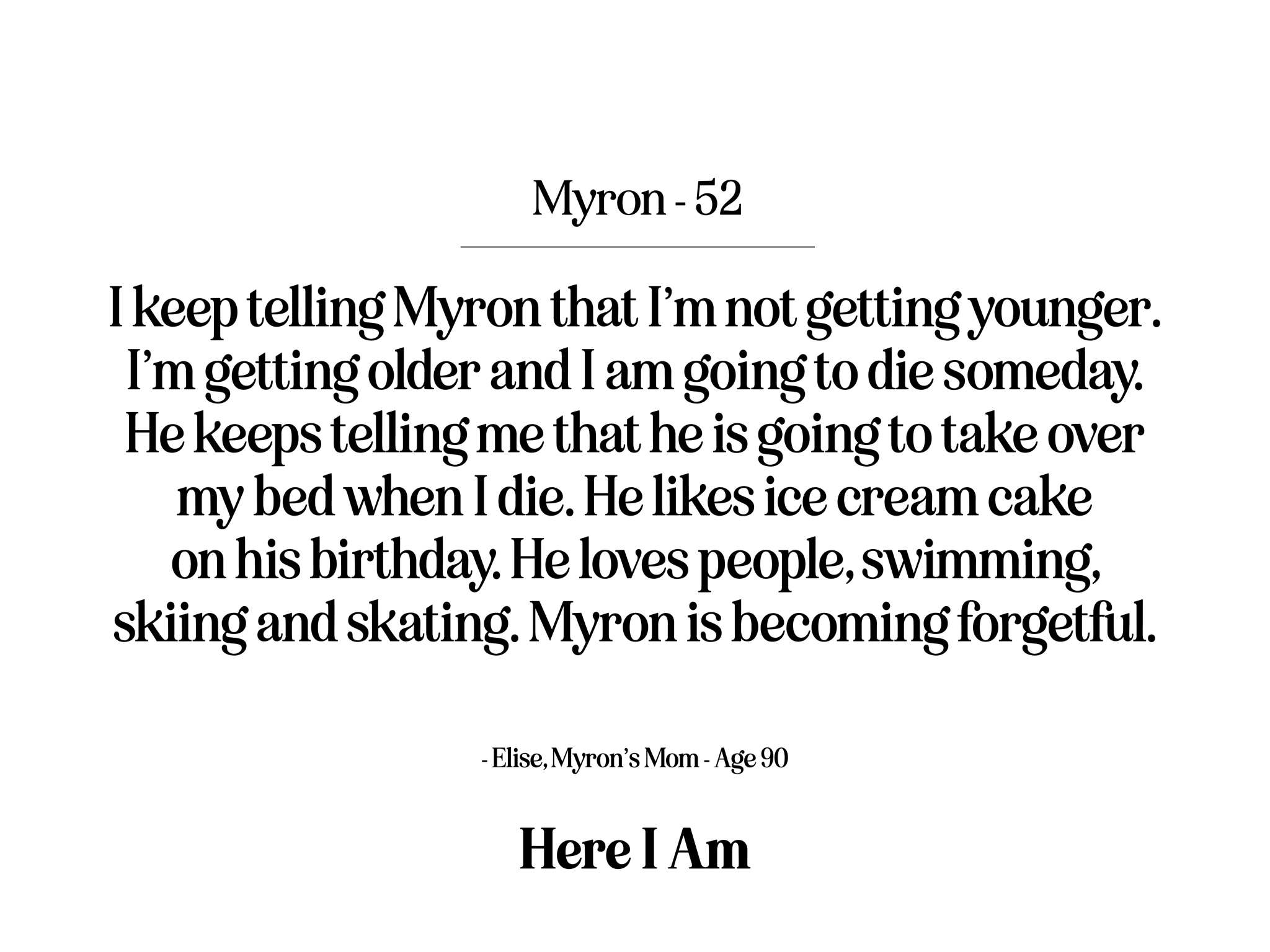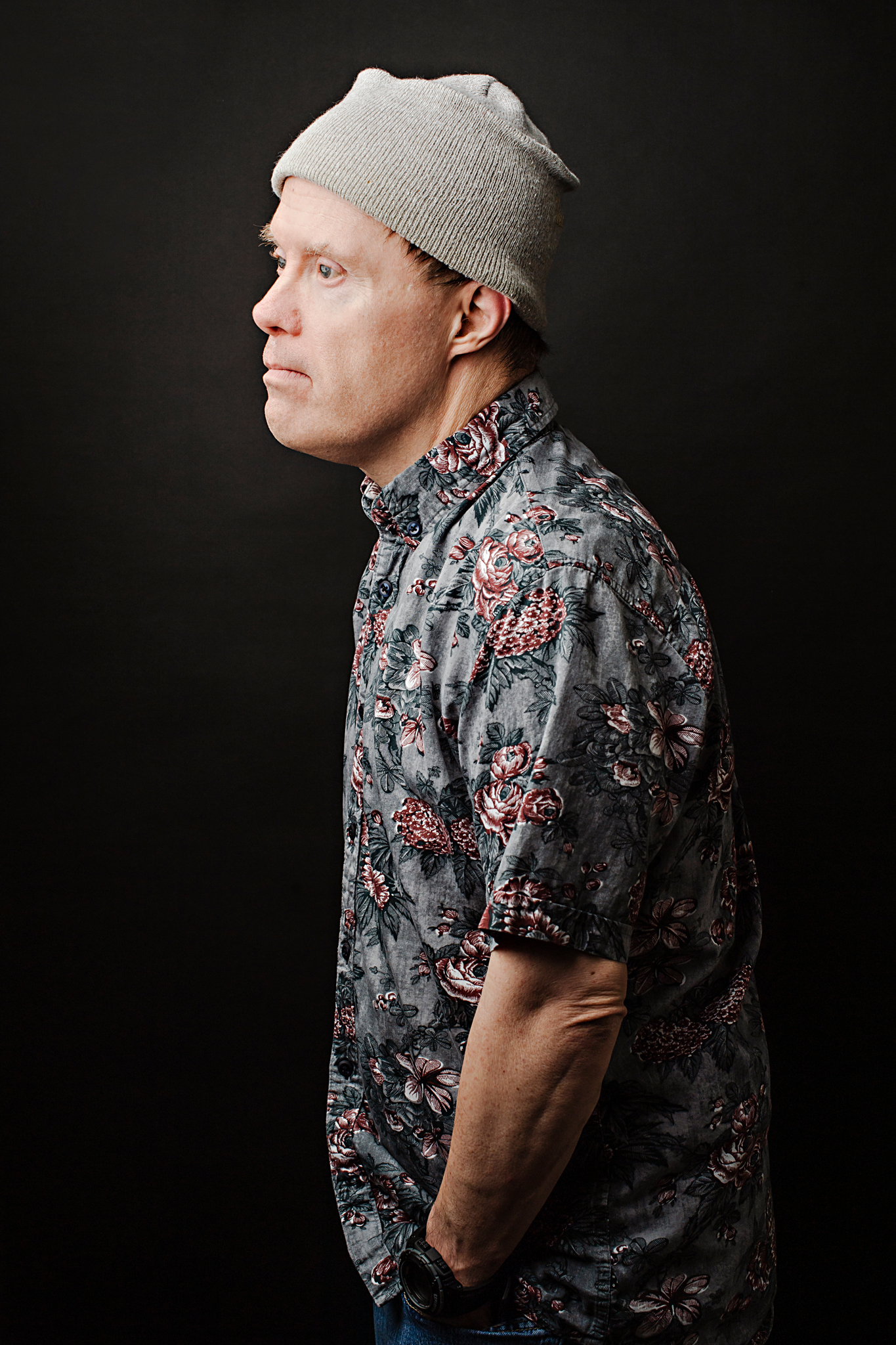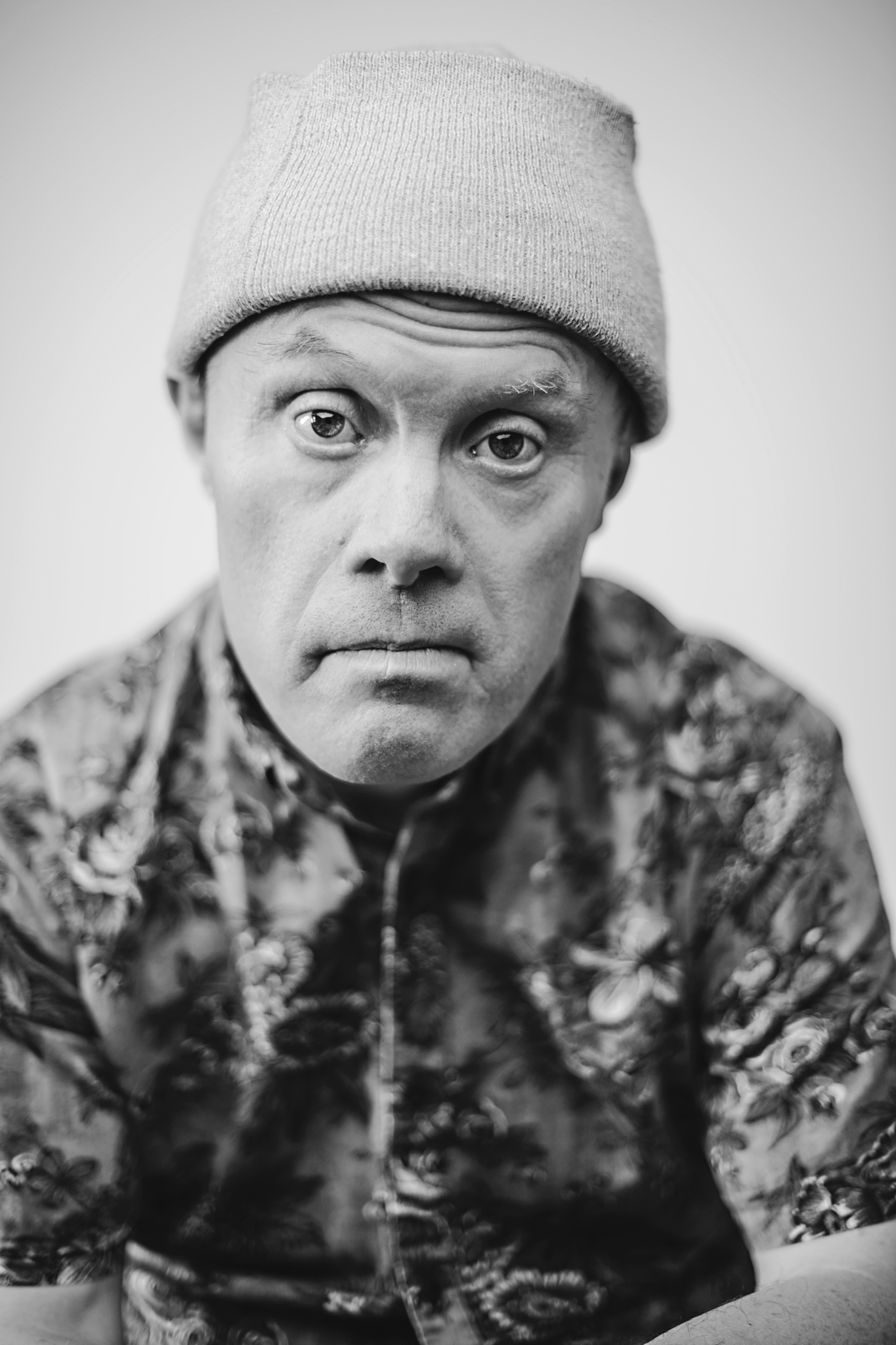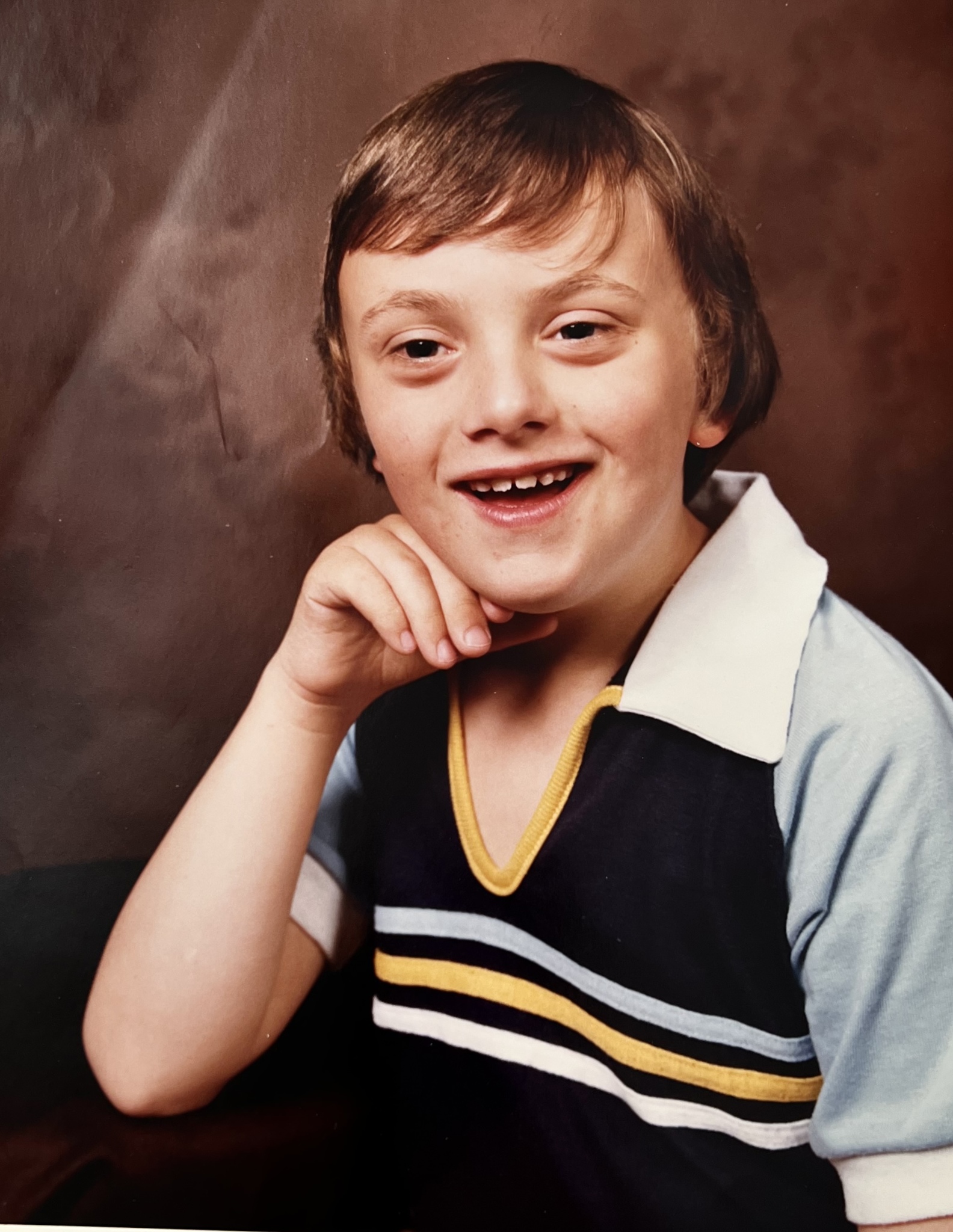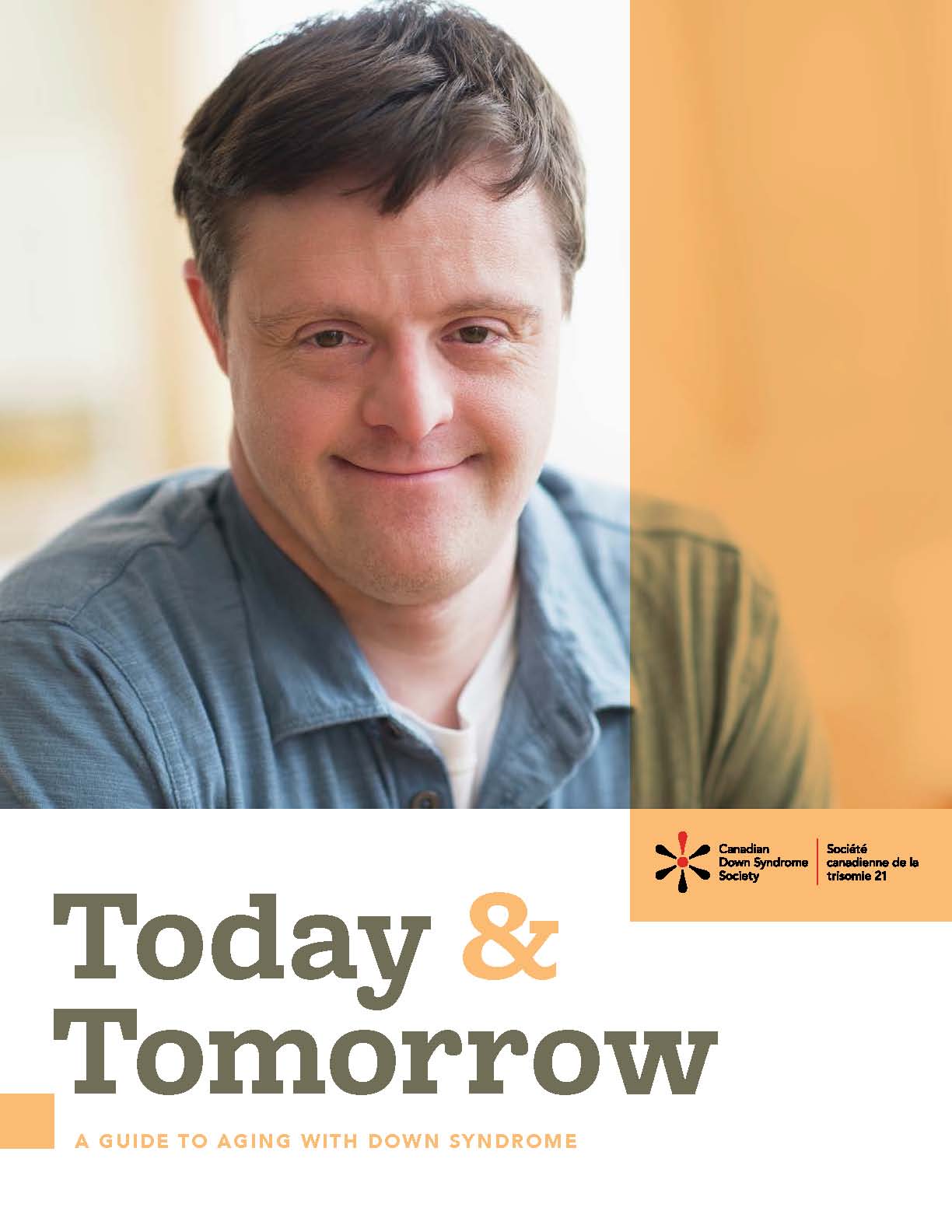

A Photo Essay by CDSS & Hilary Gauld
Life expectancy for Canadians with Down syndrome has more than doubled over the past 40 years—from 25 years in 1983 to over 60 years today. This can be attributed to advances in medical diagnostics and treatment.
Yet many people still have the false assumption that individuals with Down syndrome do not live into their senior years. This photo essay, “Here I Am”, by CDSS and photographer Hilary Gauld of One for the Wall refutes this misconception with a powerful and indisputable series of portraits featuring seniors and adults with Down syndrome alongside their childhood selves.
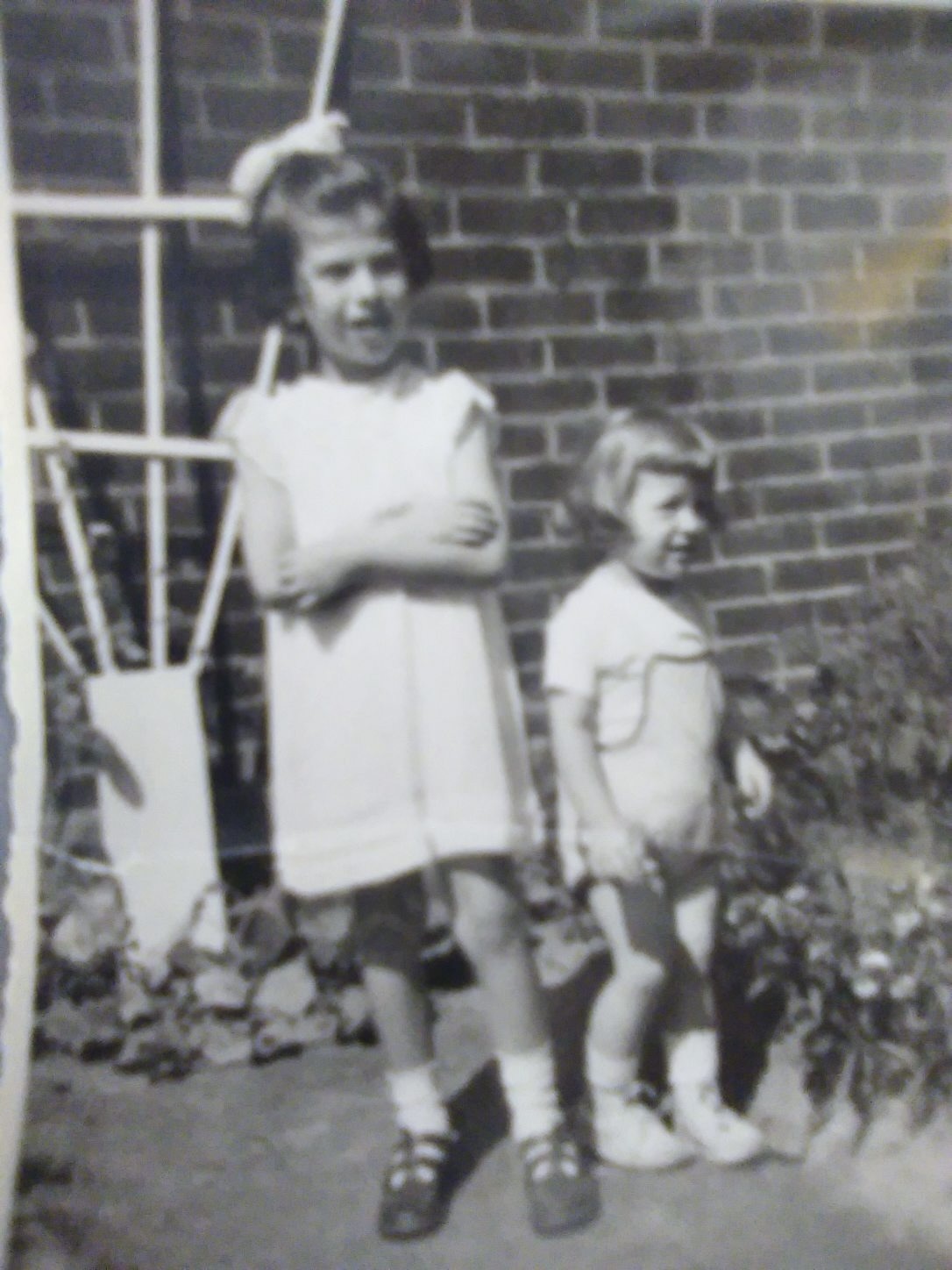
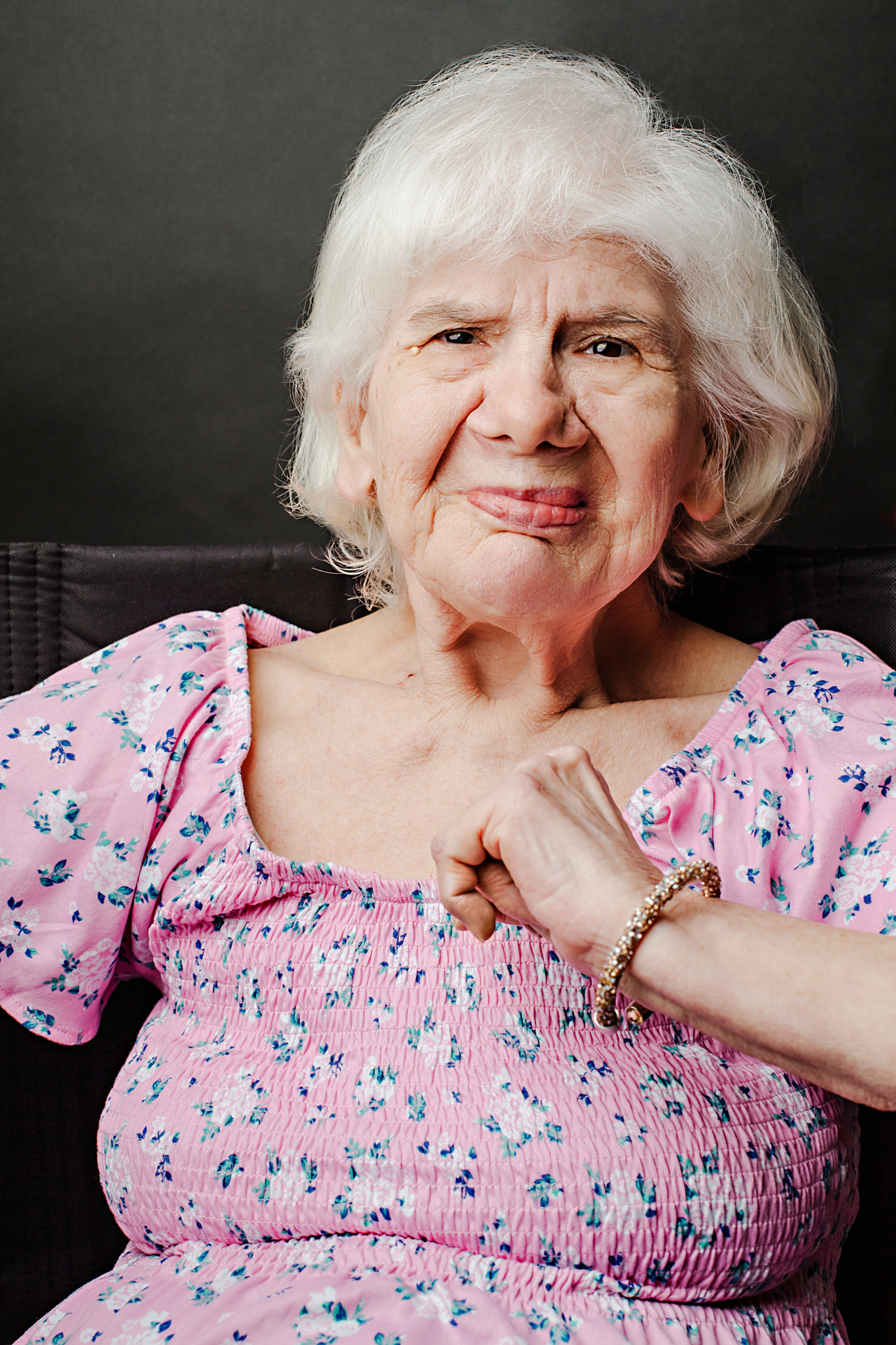
“Our parents told us that Brigette wouldn’t live past seven and now she is 75. She is thought to be one of the oldest living persons in Canada with Down syndrome.”
Marianna, sister and caregiver of photo essay participant Brigitte
Photo Gallery
We want to thank all of our participants who so graciously gave us their time for this project.
“After photographing Canadians with Down syndrome and their caregivers for almost a decade, adults with Down syndrome over the age of 40 have continued to be the least represented. While statistics show that the average life expectancy has increased for people with Down syndrome, the visibility of seniors and elders remains limited.” – Hilary Gauld, One for the Wall
As Seen In:
For media inquiries, please contact Shannon Stephaniuk at shannon@glossyinc.com or 416-301-0506
Aging with Down Syndrome
CDSS Today and Tomorrow: A Guide to Aging with Down Syndrome was created to help people with Down syndrome and their caregivers learn more about the aging process and how to plan for the future. You can download a free copy today.
You’ll also find information about changing behaviours into adulthood, Alzheimer’s Disease, and dealing with grief in our Healthy Aging Resource Section.
The Canadian Caregiver Crisis
Celebrating how far the Down syndrome community has come is an important focus of this project, which also shines a spotlight on a growing crisis in Canada—the healthcare system’s growing dependence on unpaid caregivers.
Already 75% of caregiving in Canada is done by unpaid caregivers. As they age, people with Down syndrome are at a higher risk for certain health conditions requiring additional care, such as Alzheimer’s Disease. It is imperative to ensure adequate information, health services and support are available to these individuals.

“As we continue to change the public narrative, this work spreads awareness about Down syndrome. Aging Canadians with Down syndrome and their caregivers should have comprehensive, unbiased information about aging issues, and have access to all of the government support that is available to them. No parent should be left asking ‘who will provide care for my child once I’m gone?’ This photo essay raises awareness and challenges the stereotype that people with Down syndrome don’t live long lives.”
– Laura LaChance, Executive Director, CDSS
SOURCES
- 18.8% of Canadians were at least 65 years of age as of July 2022.
- 75% of caregiving in Canada is done by unpaid caregivers.
- Canadians spend 5.7 billion unpaid hours each year on caregiving.
- In 2018 alone, 7.8 million Canadians provided care to a family member or friend.
- Caregivers are estimated to contribute the equivalent of 4.2% of GDP or $97.1 billion annually to Canada’s economy.
- One in four Canadians is a caregiver to a family member or a friend and 50 per cent of Canadians will be caregivers at some point in their lives.




